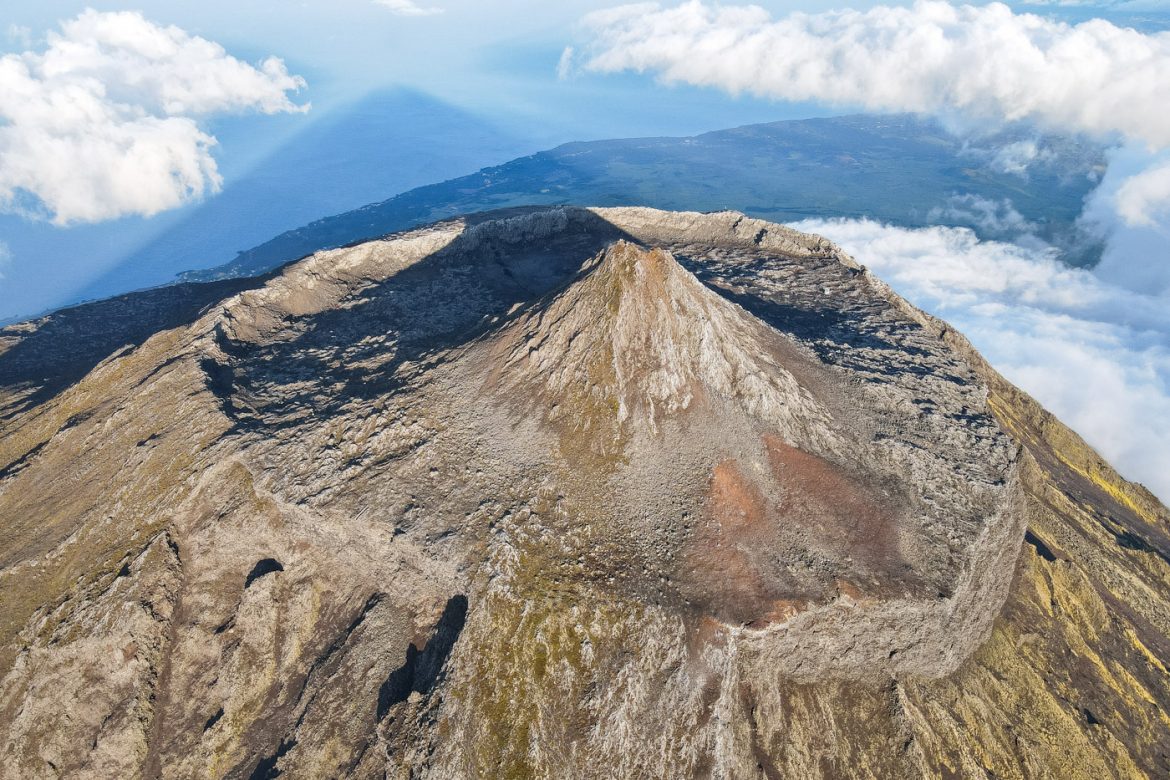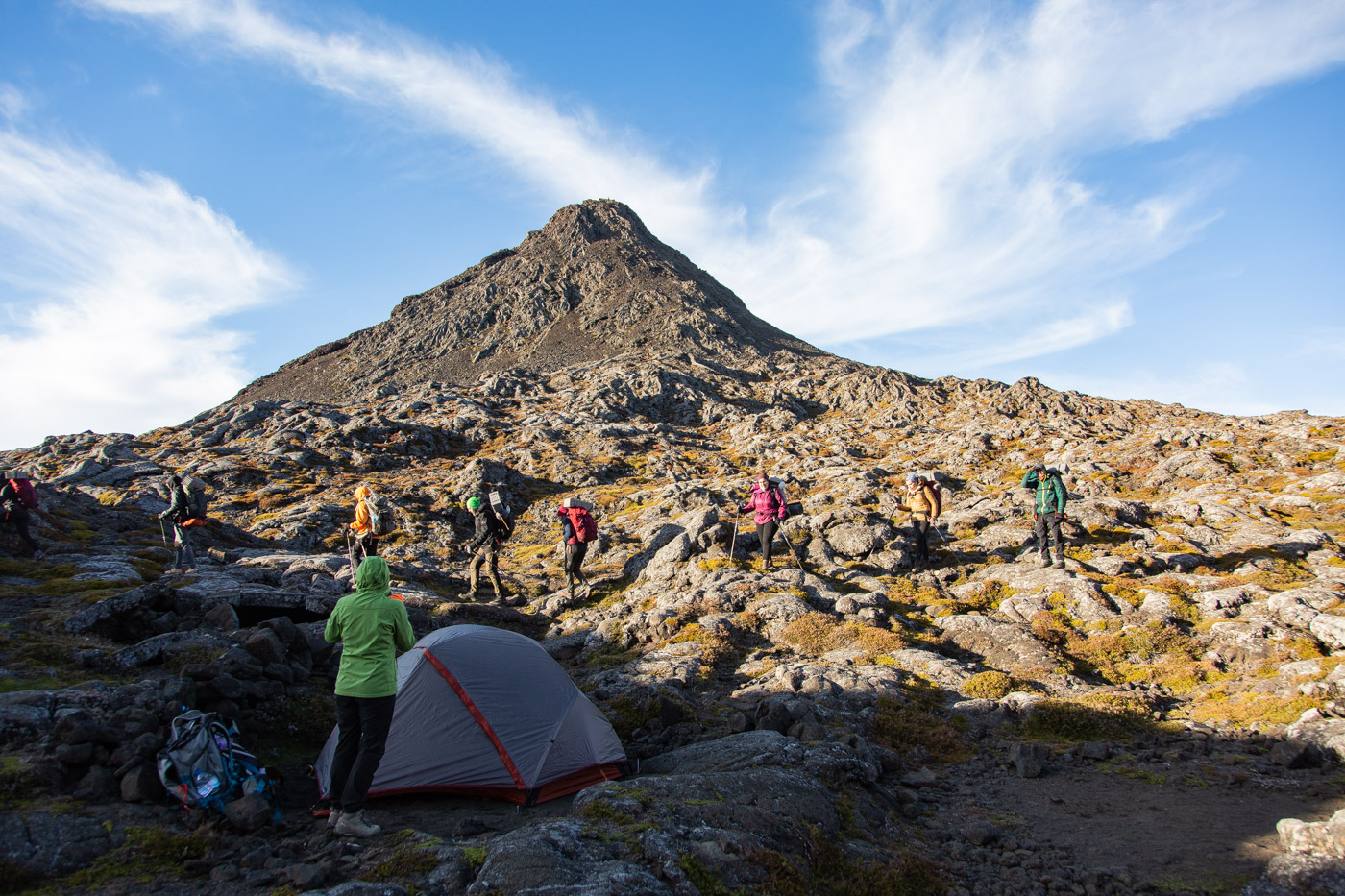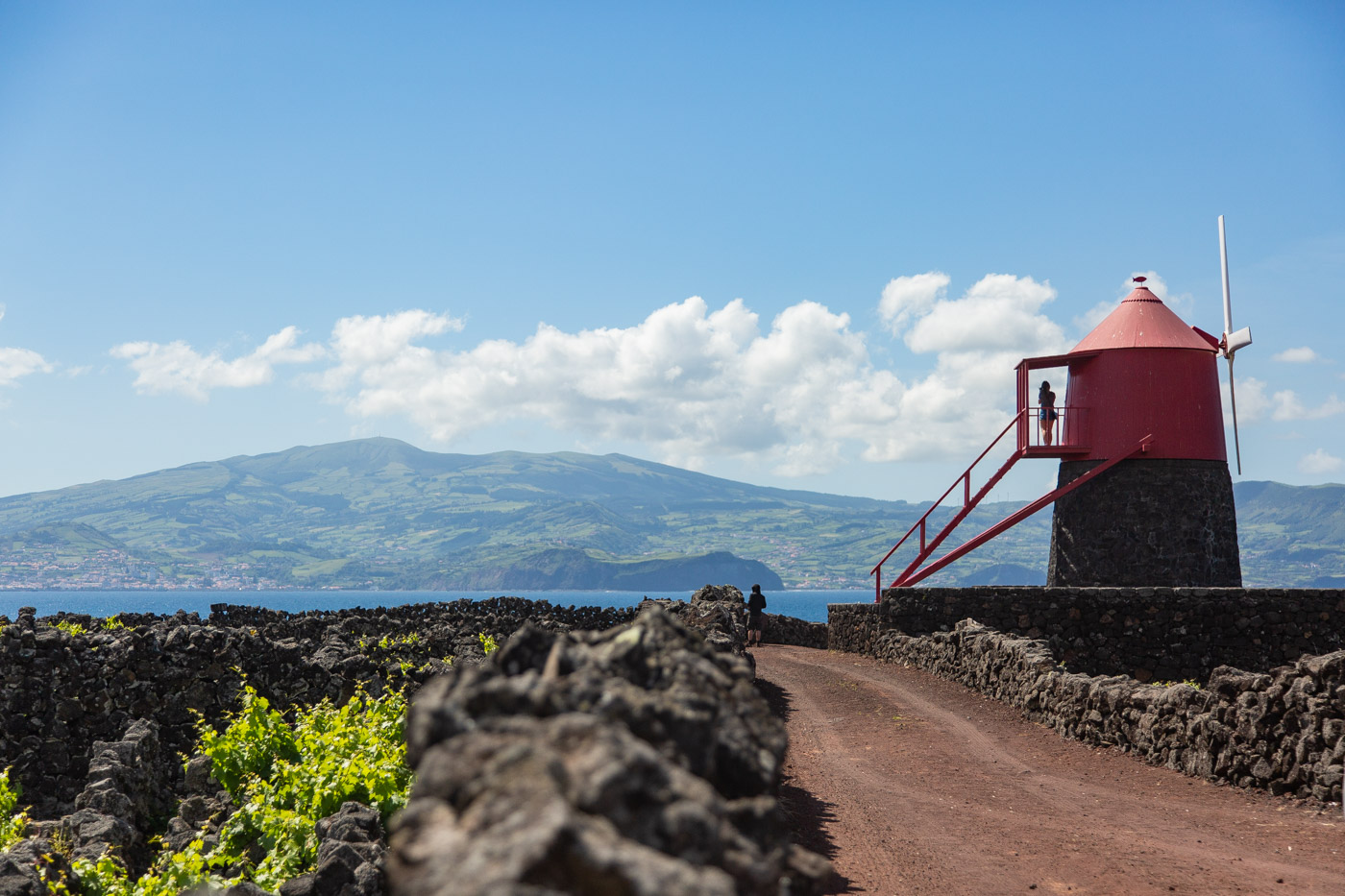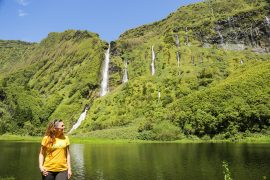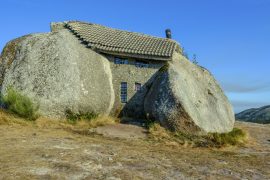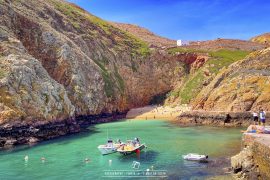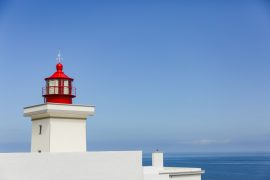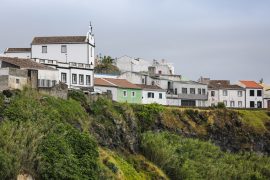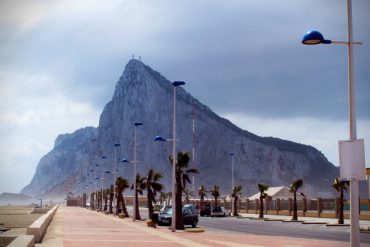Planning a short visit of a couple of days that includes the three islands of the Central Group (Pico, Faial and São Jorge) is probably a mistake. Why? Because each island has so much to offer that if you try to squeeze the three islands in, say, 10 days, you will be rushing from one place to the other, really. Take your time!
Pico Island has a panoply of things to do and visit, and you will need all those ten days just for a feel of this island. Take time to follow the whale hunting trail, but also Pico’s wine trail. And obviously, if you have the legs, plan an ascension of Pico volcano, the highest mountain n Portugal and book a boat trip to see the cetaceans!
Have a quick look of all the different things you can visit in Pico Island:
1. Enjoy the spectacular views over Mount Pico
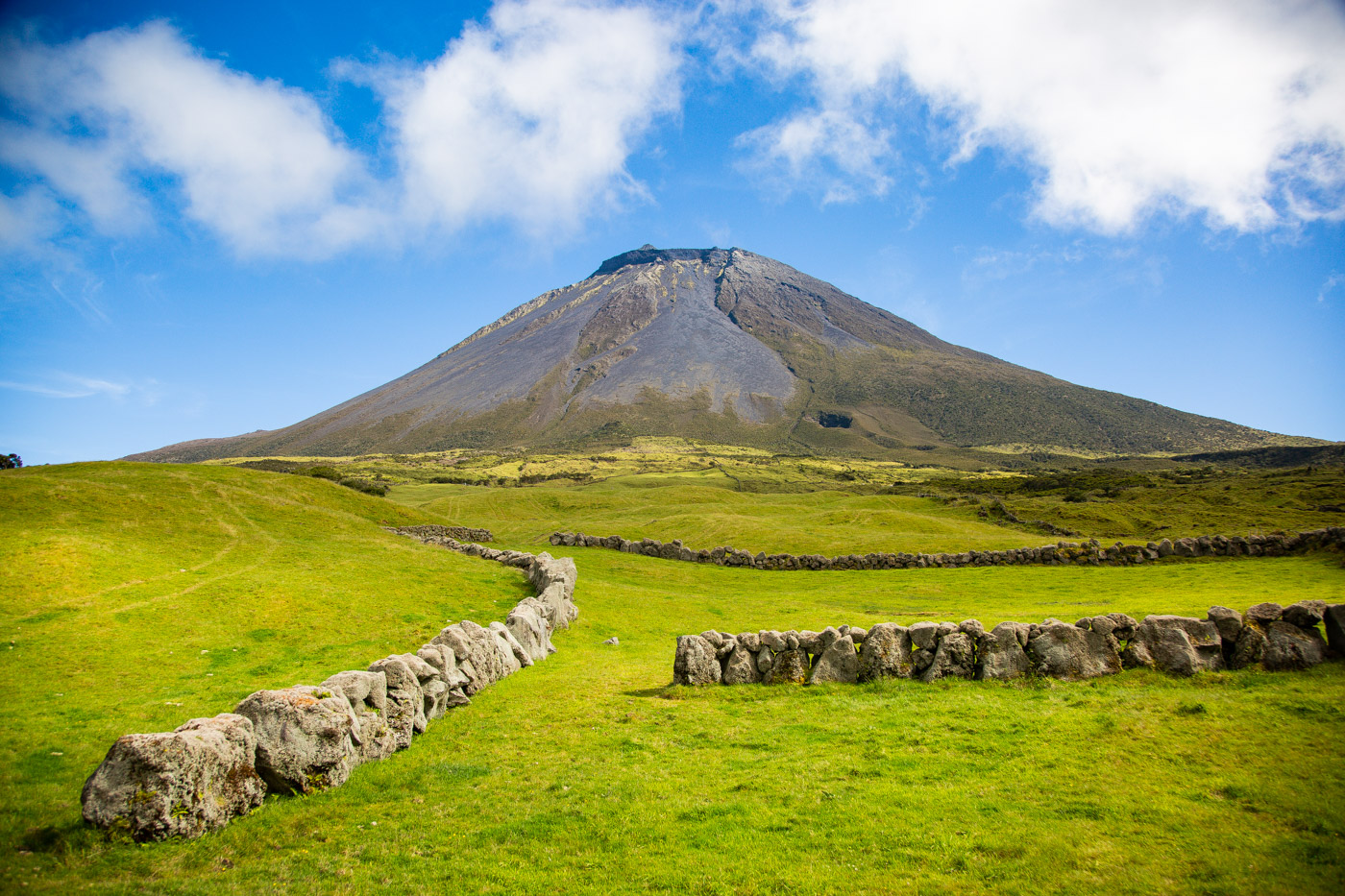
If you stay ten days in Pico, you will see Pico in hundreds of different attires. The weather changes constantly, and the clouds come and go as if they were dancing around the top of the mountain, the highest in Portugal at 2,351 metres above sea level. Pico is also an active volcano, even f dormant for the last 300 years.
2. Go to Casa da Montanha to plan your ascension of Mount Pico
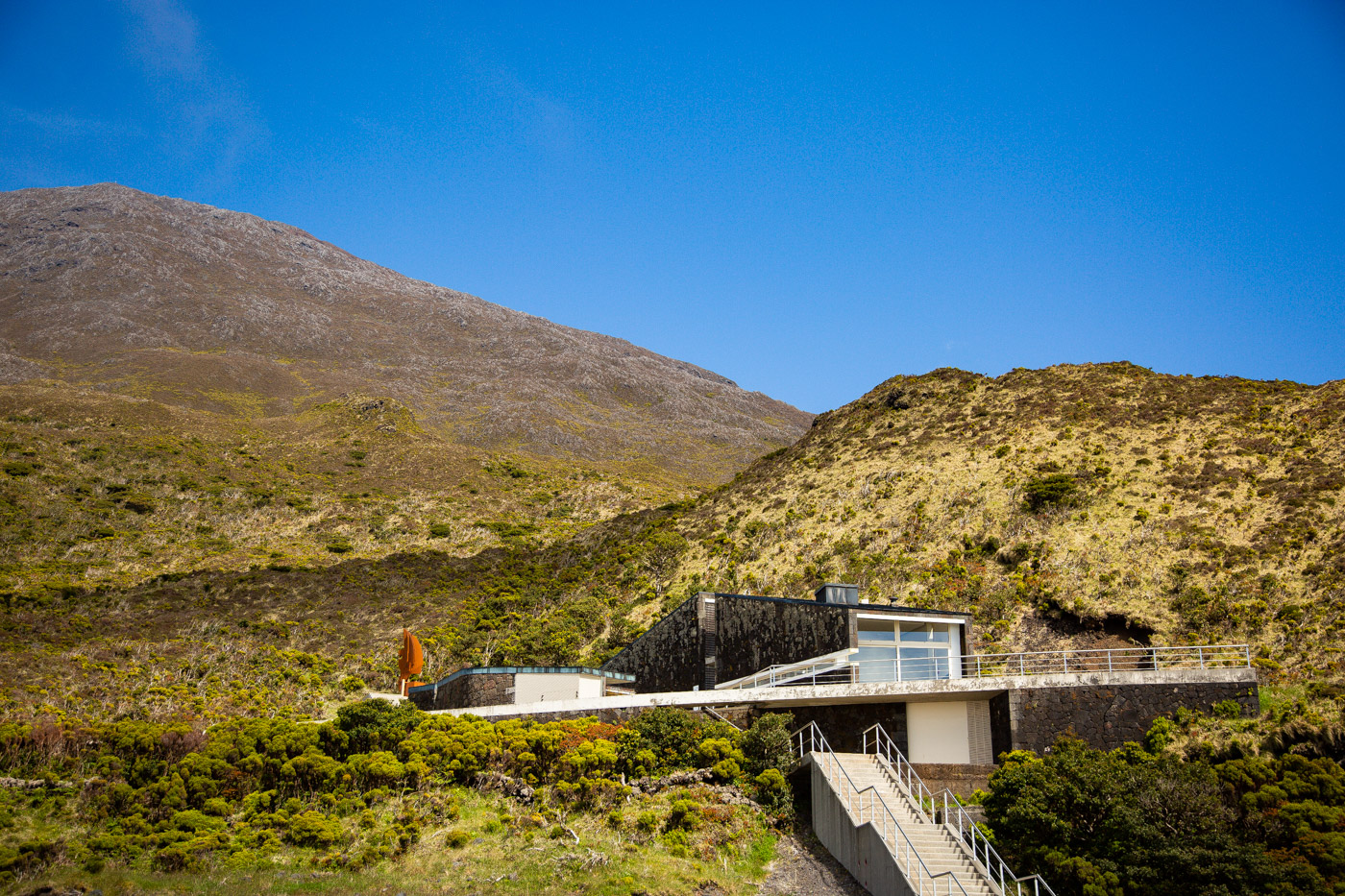
If you plan to ascend the Pico mountain, you should first of all head to the Casa da Montanha. There you will get all the information you need regarding authorisations, guides, prices and weather.
Useful info:
- To get all the info you need to know, check our article : Climbing Pico volcano.
- To make your online reservation go to the official website of Casa da Montanha
- Prices vary depending on what you wish to do (Ascension of Pico+Piquinho+overnight sleeping)
3. Climb to the crater of Pico volcano (One of the 7 Natural Wonders of Portugal)
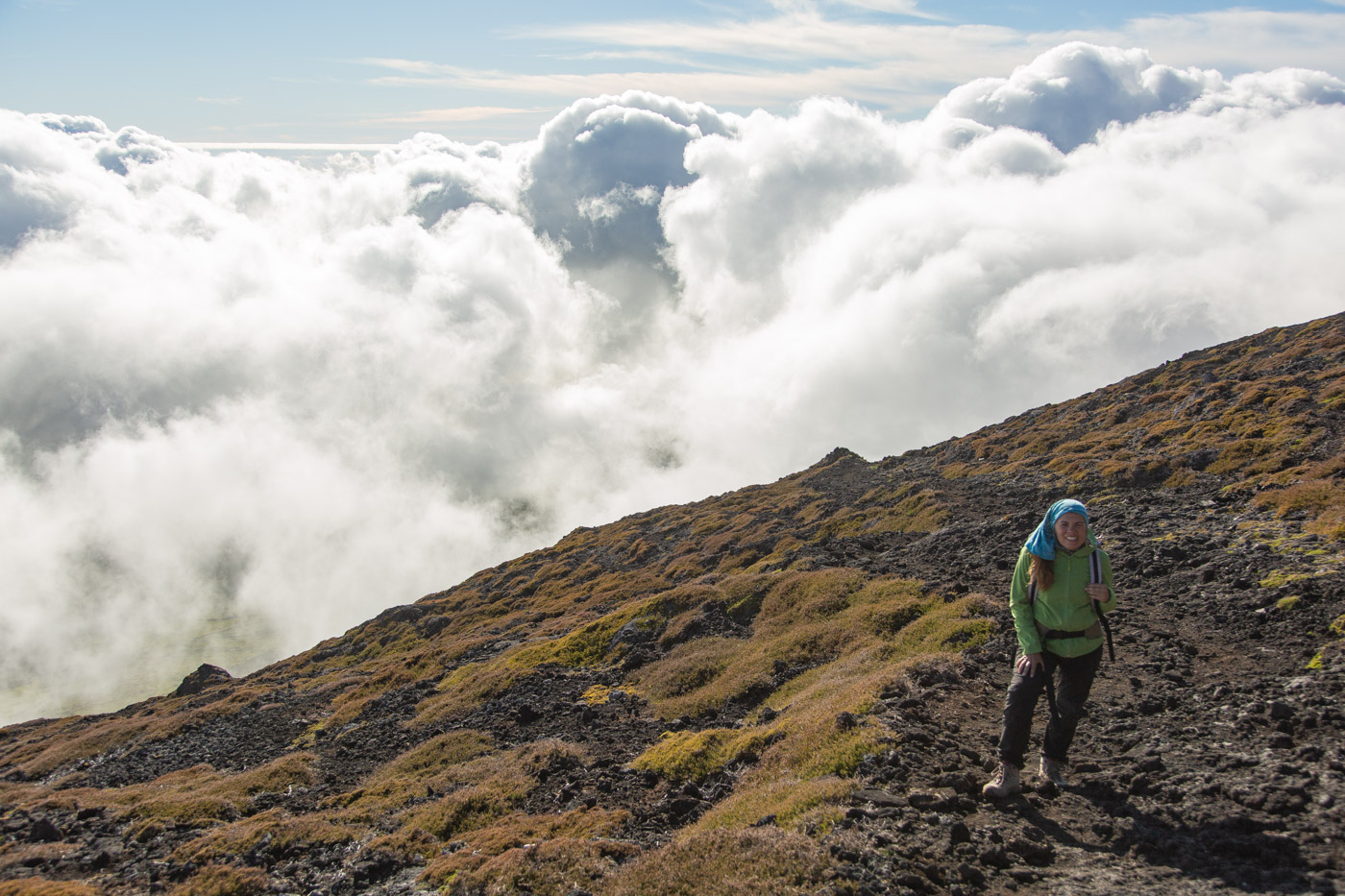
Ascending the Pico mountain is not an easy task. Before asking for the permission and making all necessary payments to get the authorisation, make sure you understand what you are up to. Most important, make sure you know your limits. Pico mountain is above 2,000 metres, and from the Casa da Montanha until the crater, and until Piquinho, it is all the way up hill, whtout any flat trails. The trail itself is of high difficulty, because, even if not technical climbing involved, you will feel often that you are actually climbing, due to the loose rock along the way.
Useful info:
- To get all the info you need to know before climbing to the top of Pico, check our article : Climbing Pico volcano.
4. Watch sunset from Piquinho on top of Pico volcano
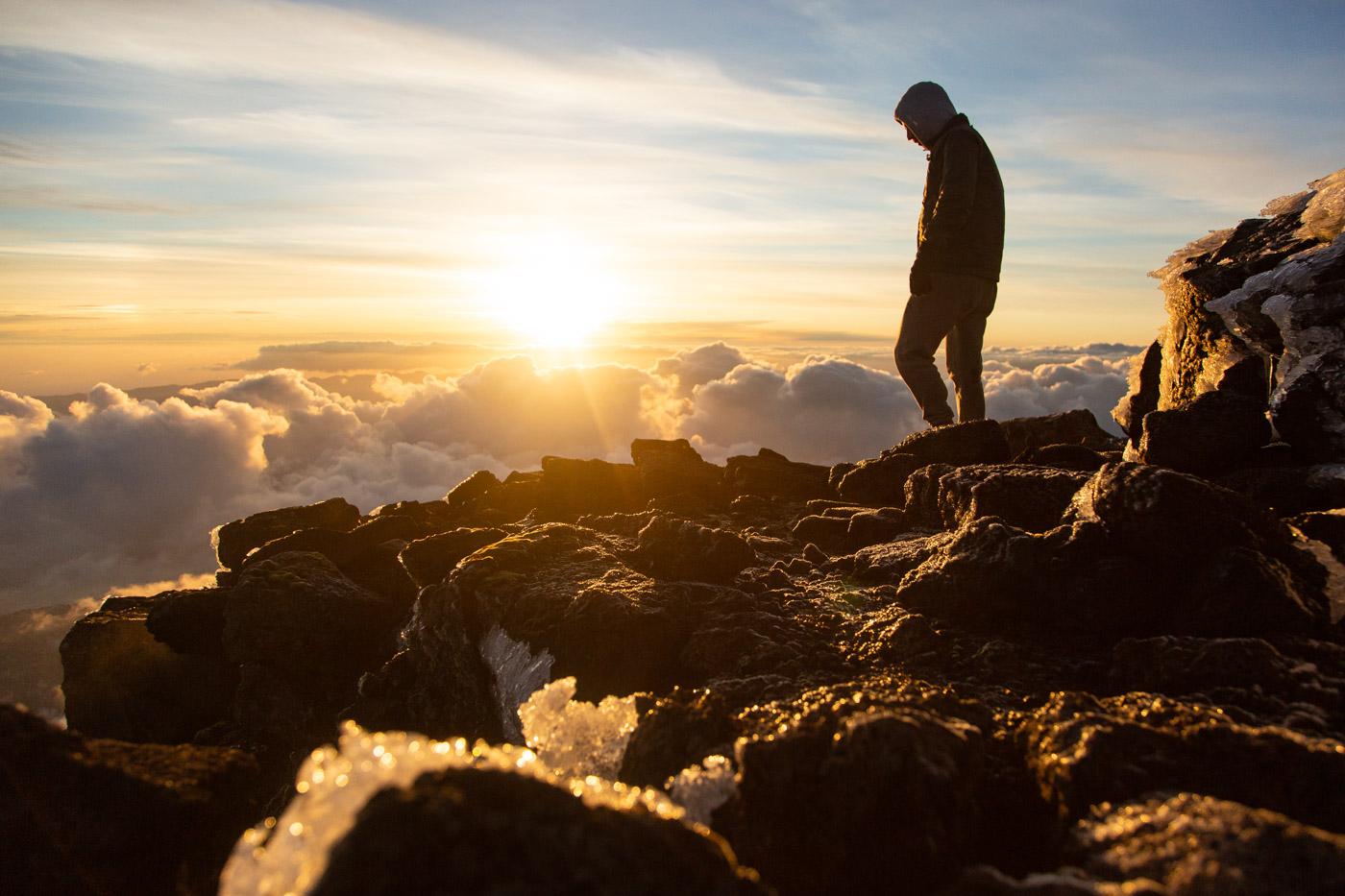
At Casa da Montanha you will find out the schedules for starting the ascension. You can start at any time, but there are four window frames that you ned to choose at the time of your reservation.
Useful info: window frames for the ascension
- 00h00 – if you plan to climb to be there at sunrise, you can start from 00h00 on
- 08h00 – you can start from 8h00 if you plan to go for the day
- 12h00 – you can start from 12h00 if you plan to go for the day
- 18h00 – you can start from 16h00 if you plan to climb and spend the night
5. Camp on top of Pico mountain
There are a few reasons why you should start in the afternoon and spend the night high on the crater. If you do that, you will be splitting the effort in two days. It will be hard to climb, so it is reassuring to know that you will have a night sleep before starting to retrace the way down again.
If you sleep there, you will get the unique chances of witnessing both the sunset and the sunrise. So, if you are ascending with bad weather, at least you have double chances of getting good weather on one or the other day.
Make sure your sleeping bags are warm enough to spend the night there, as temperatures, even in summer can drop to negative levels. When we slept there, we had ice on our tent during the night and morning, and did not have a very cosy night of sleep because of the temperatures.
6. Watch sunrise from Piquinho
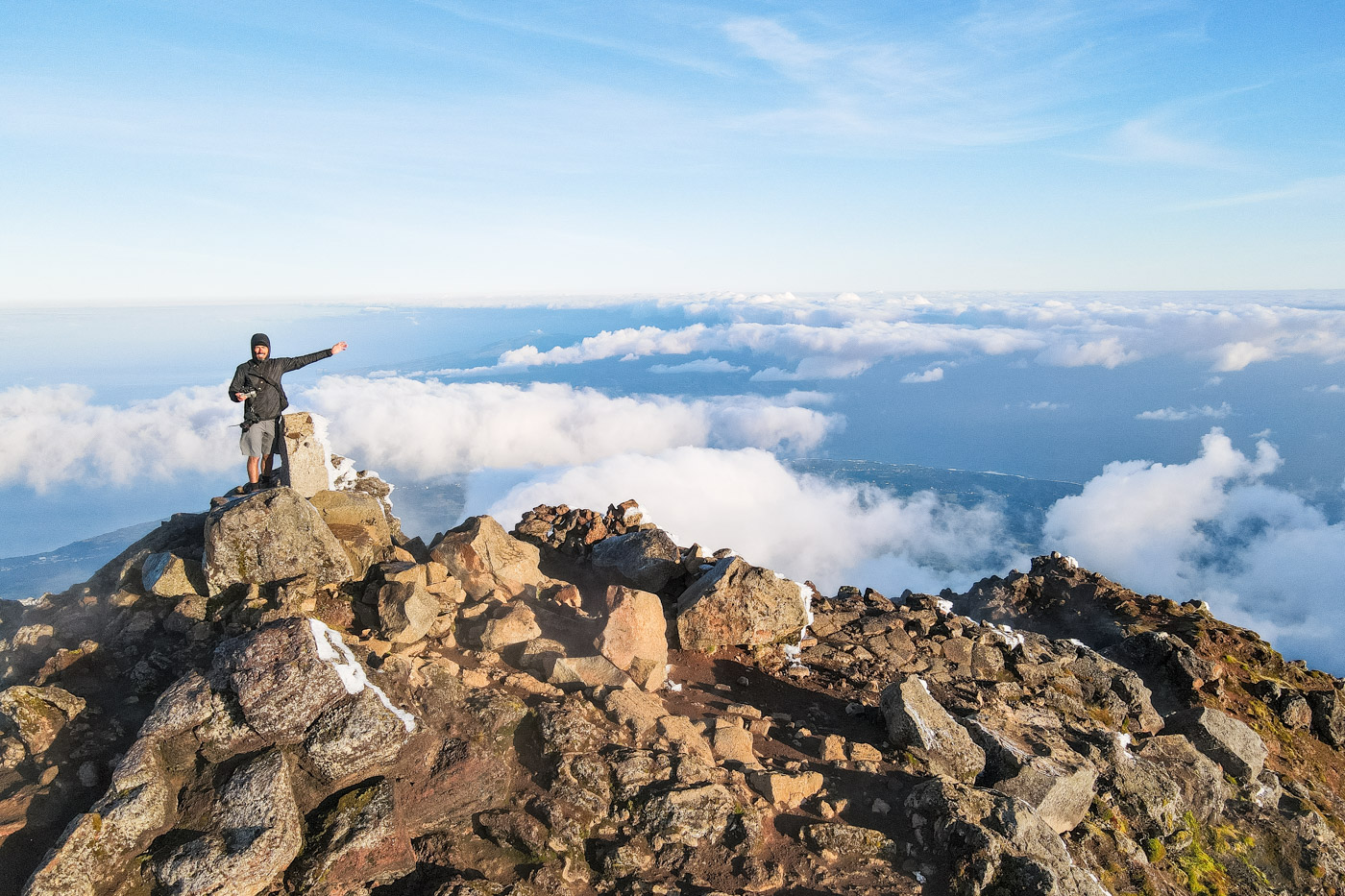
The Pico is a stratovolcano with a pit crater on its summit. There is a round crater of about 500 metres in diameter on top of it, and inside this crater there is another peak, called Piquinho (or small peak), which is a volcanic cone created by a later eruption and that rises another 70 metres from the crater.
After watching sunrise, we descended to the main crater, set down our camp and prepared to the long descent, which actually took us a bit longer than the ascension, because of the nature of the trail, with loose rock and stone.
7. Climb above the Furna Abrigo
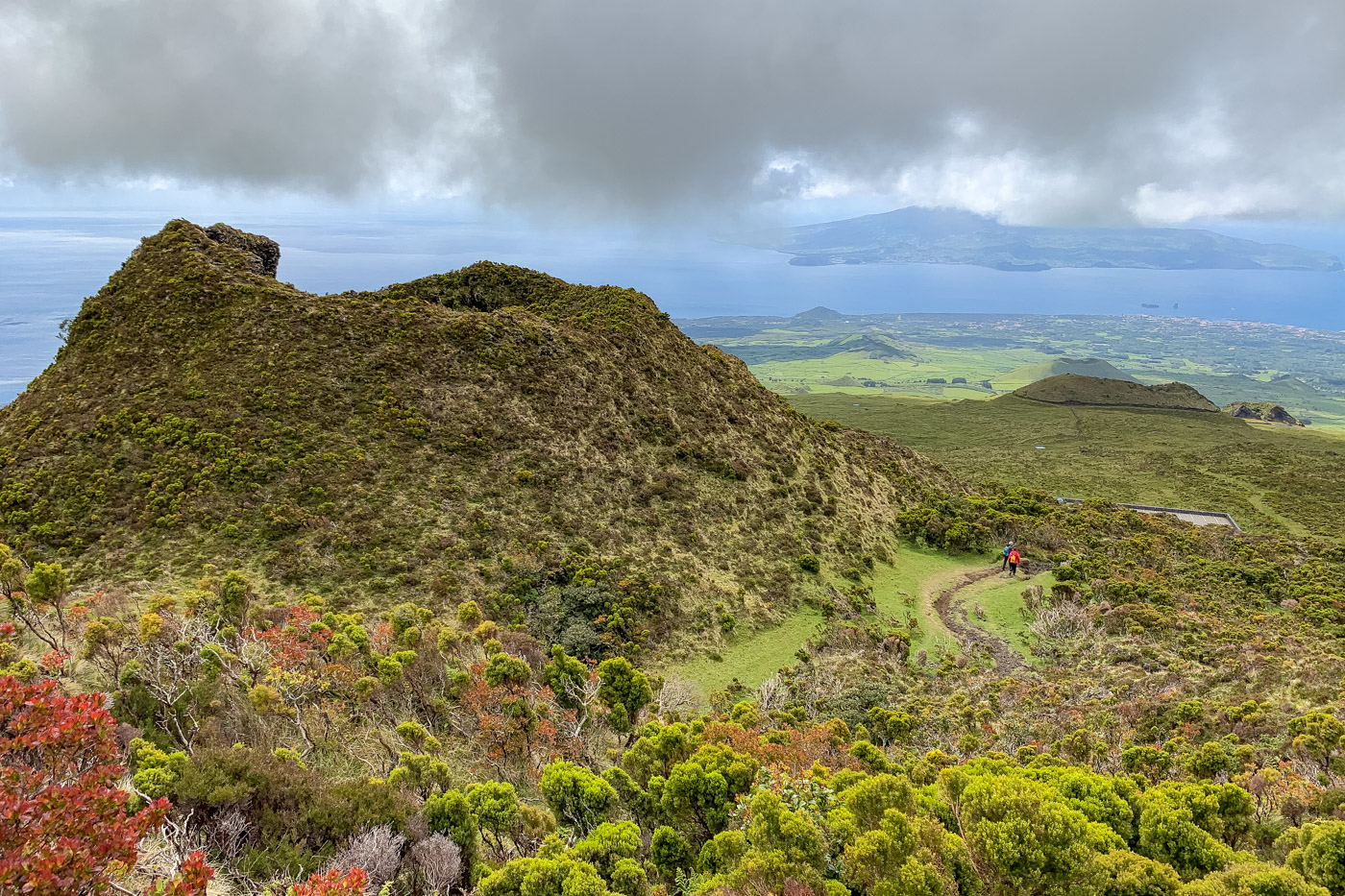
If you consider that the ascent of Pico, all the way until the crater or until Piquinho is too much for you, but you would still like to experience this mountain, it is possible to hike until the Furna de Abrigo. This place is a pit cave, that in former times was known for being the shelter of mountaineers. Its location is about one kilometre away from the Casa da Montanha and it takes about 45 minutes to reach it.
Useful info:
- The hike until Furna de Abrigo takes about 45 minutes
- Permission to hike up there costs only 5,00 EUR
8. Visit the historic centre of Madalena village
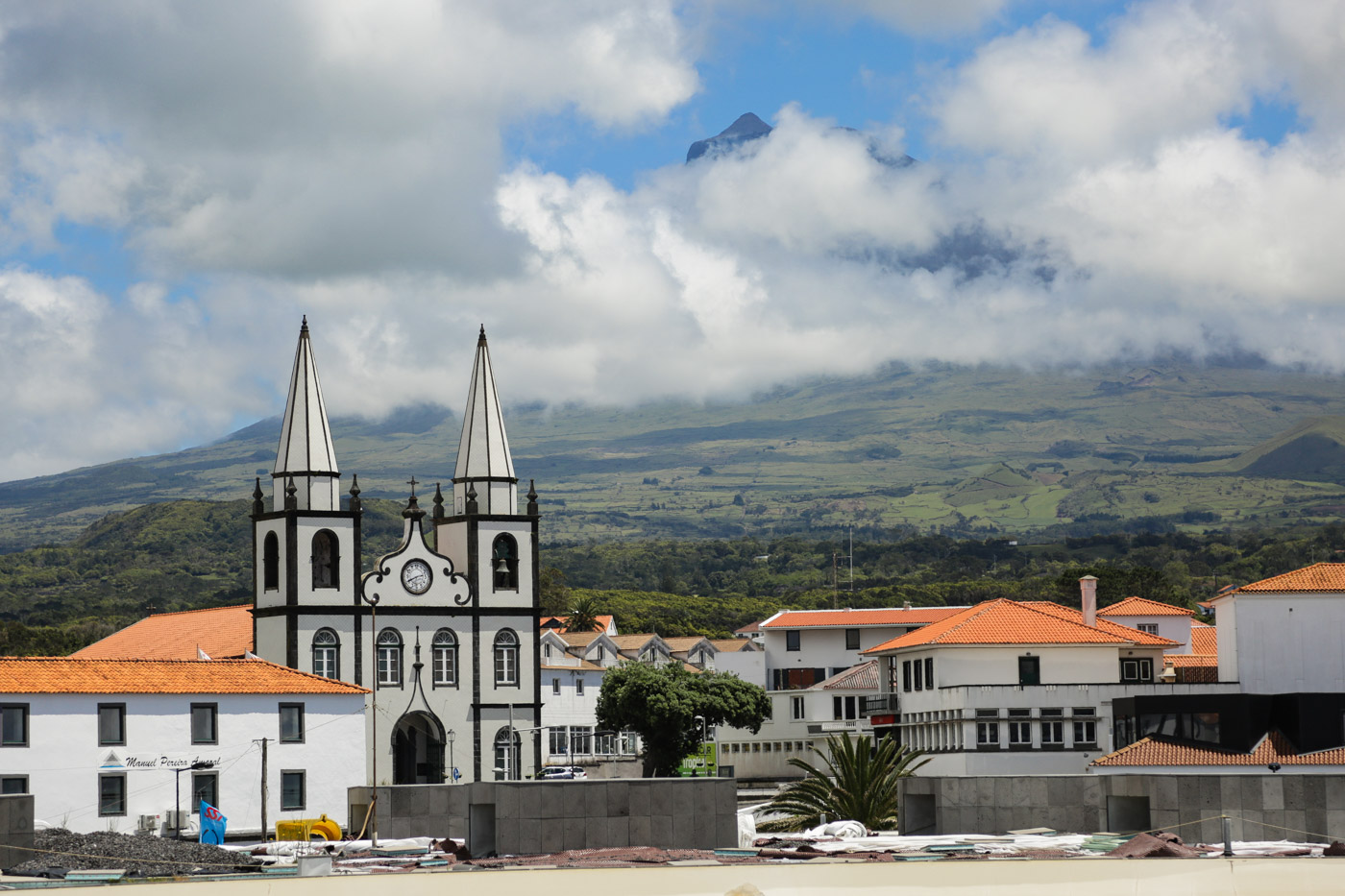
Madalena is one of the three main villages of Pico (the other two are Lajes and São Roque). The village started getting importance in the XVIII century, due to the production and exportation of wine. The crisis provoked by the plague that hit the vines meant the decline of the development of the village and the island in the XIX century. Nowadays, it is a beautiful coastal village living off tourism and the dairy industry.
9. Do not visit the Furna Frei Matias
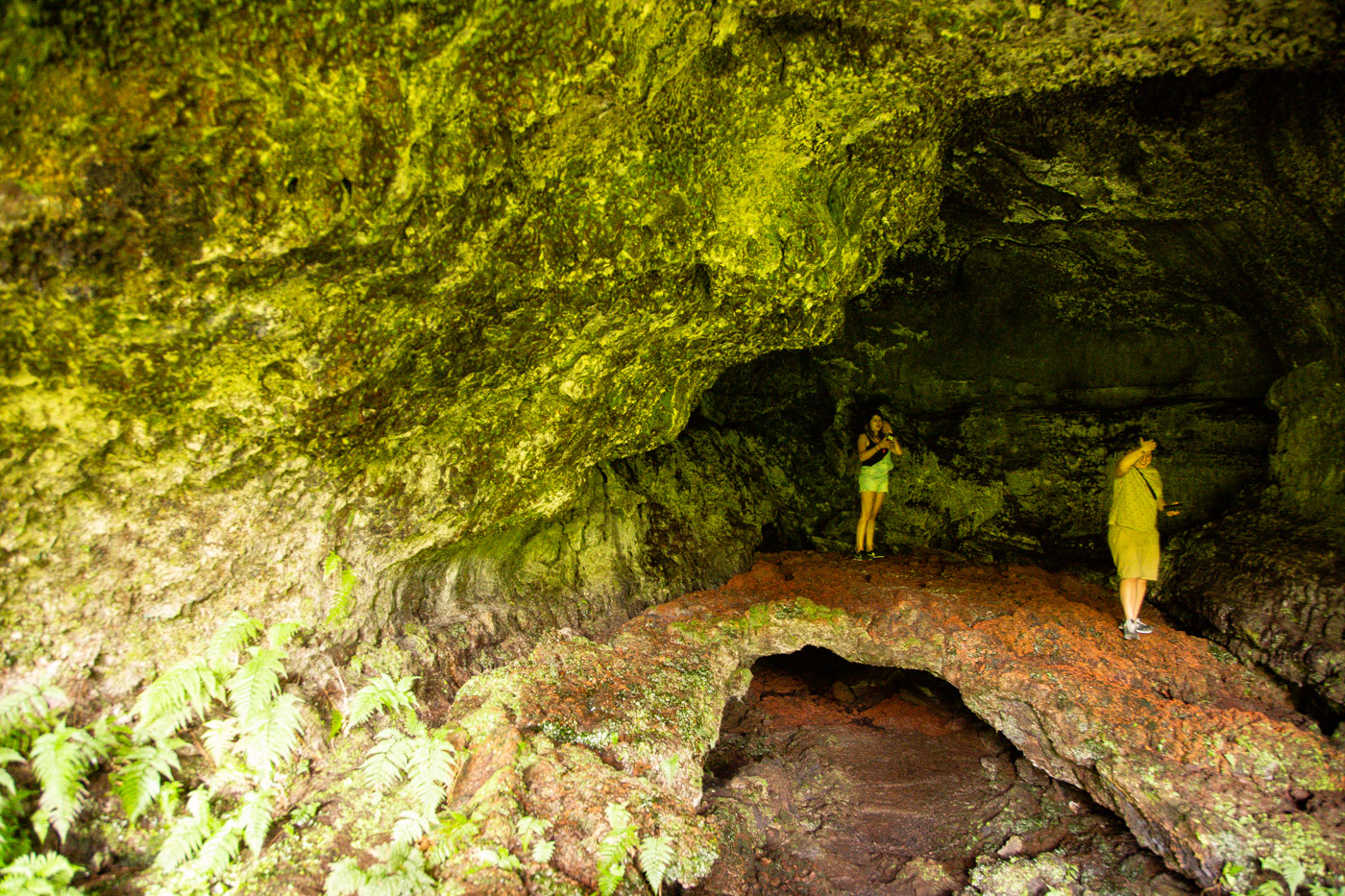
Furna de Frei Matias is a large cave inside Pico’s cone. Even though the cave is easy to find, we do not encourage its visit because (only after having visited it), we realised that the cave is located on a private land. We are not even sure the landlord agrees with his place being explored by strangers, therefore, you should get some more information before trespassing private property.
10. Find out about Pico’s wine history at the wine museum in Madalena
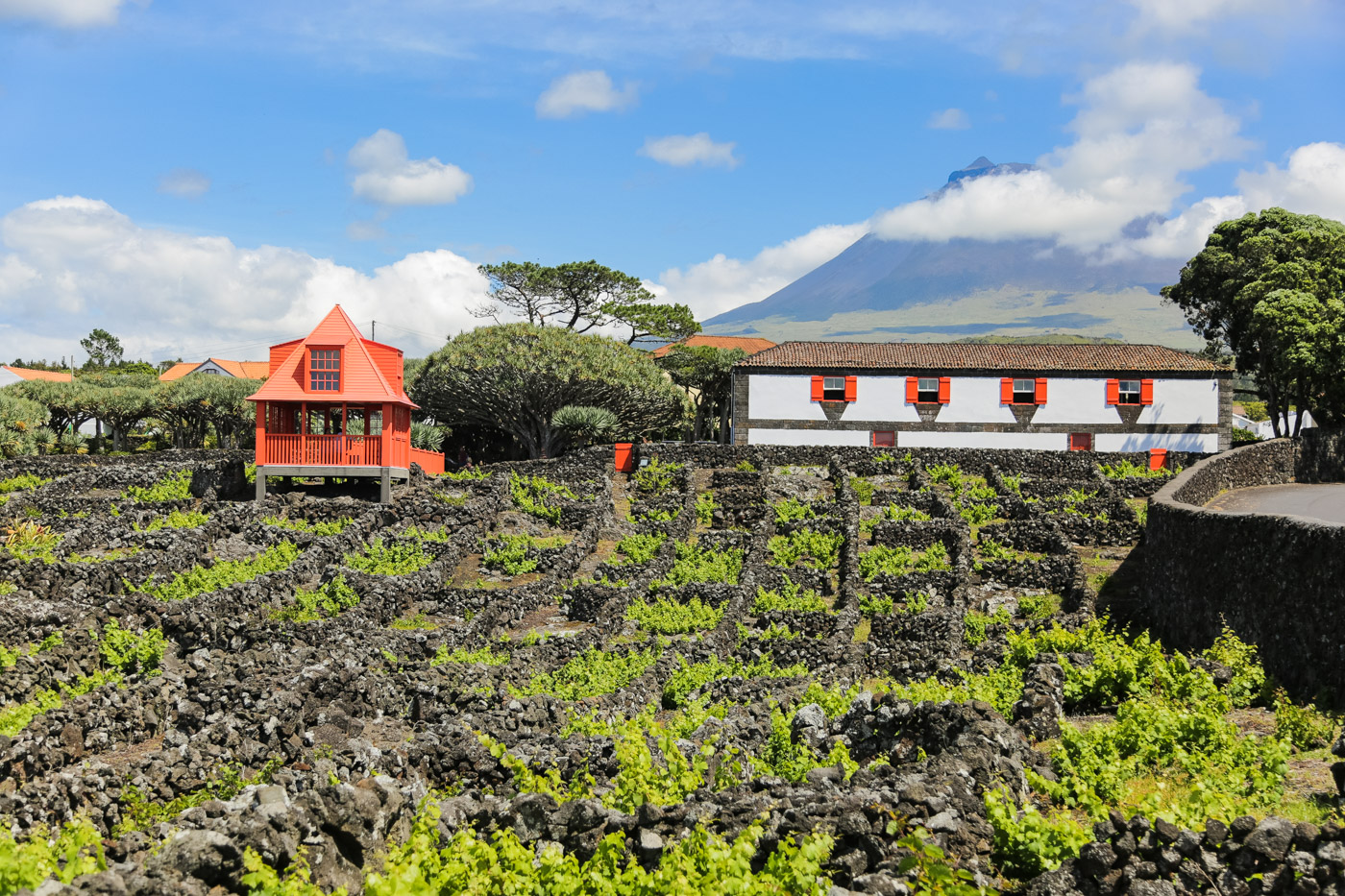
Some say Madalena is the wine capital of the archipelago. If that is the case, it explains why there is such a well made museum in the village. The Wine Museum is located within the facilities of an ancient Carmelite convent, as well as in an old winery. There you will find about the history of the introduction of wine in the island (the most popular grape introduced being the Verdelho), its golden age and its decline caused by several diseases that attacked the vines (the mildew and the phylloxera).
Useful info:
- Entrance fee: 2,00 EUR
- Opening hours: From 10h00 to 17h00, closed on Mondays
11. Discover the Dragon tree shrine in the yard of the wine museum
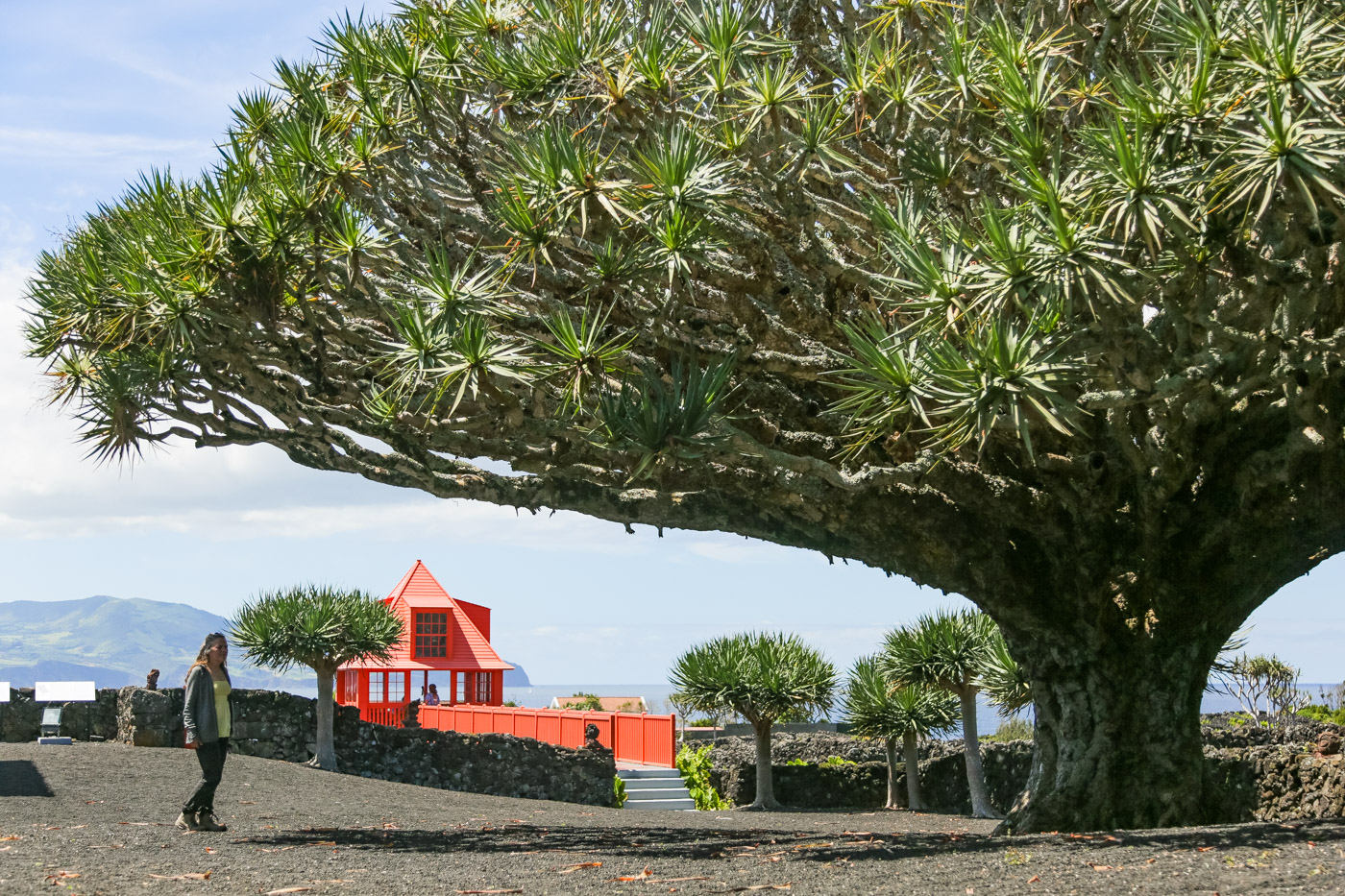
We first saw the Dragon tree when we visited Cape Verde. After some research, we found out that this species is native to the Macaronesia (Cape Verde, Canary islands, Madeira and Azores, which are four volcanic archipelagos in the North Atlantic Ocean). It was therefore not surprising to see dragon trees in the Azores. What came as a huge surprise, though, was that the Museum of Wine holds one of the largest concentrations of dragon trees in the Macaronesia, some being more than 100 years old. They call it a shrine, and indeed there is a peaceful feel around the trees, and it is a wonderful place to have a break and replenish one’s energy.
12. Photograph the lookout at the wine museum
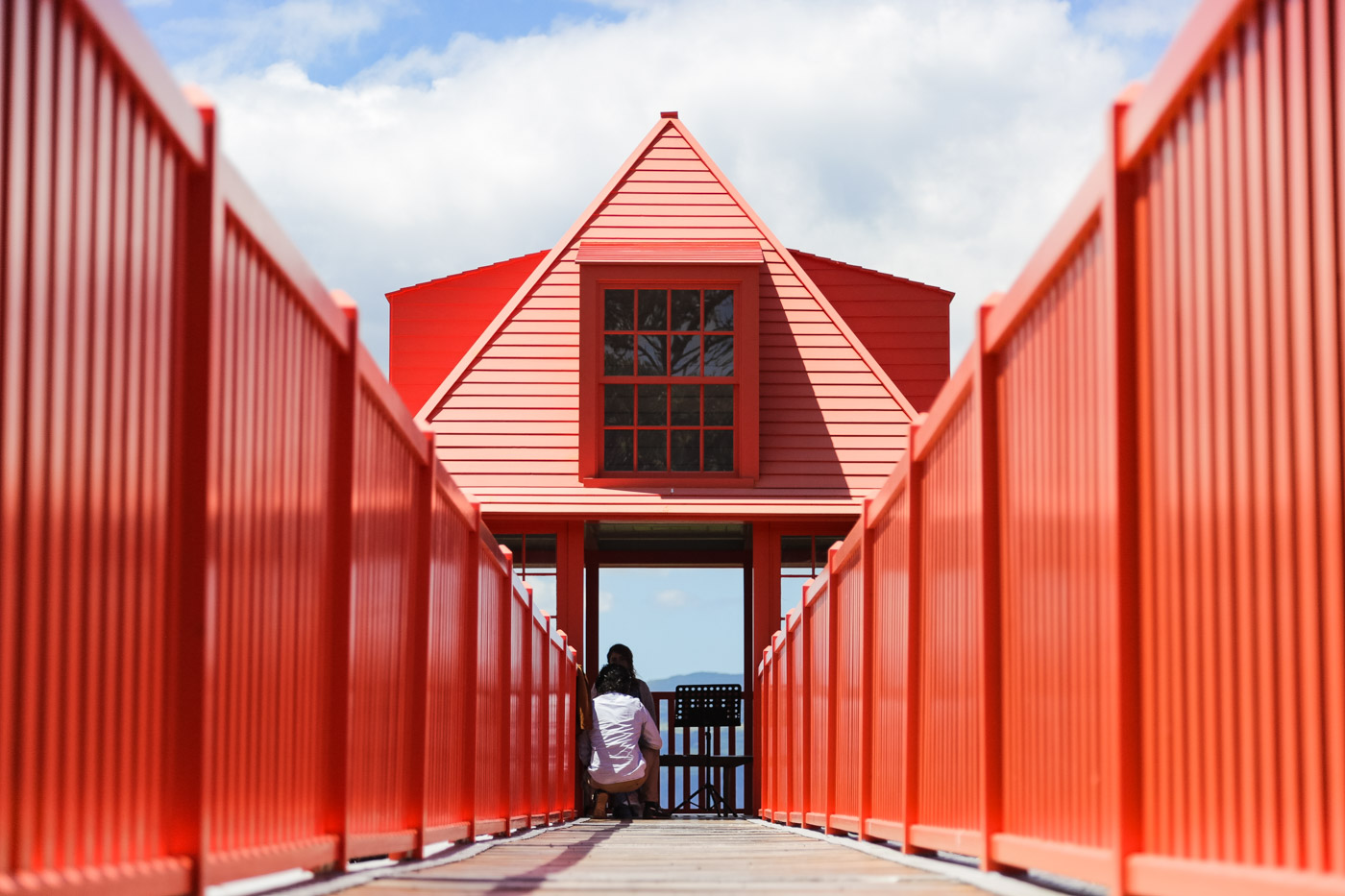
Take enough time for the wine museum in Madalena. Besides all the information about the history of wine, there’s also the winery to understand how wine was traditionally produced and a beautiful red, wooden lookout amidst the vineyards. This lookout allows incredible views over the museum and vineyards, and it is n itself a very photogenic place.
13. Understand the true meaning of an adega (winery) in Pico
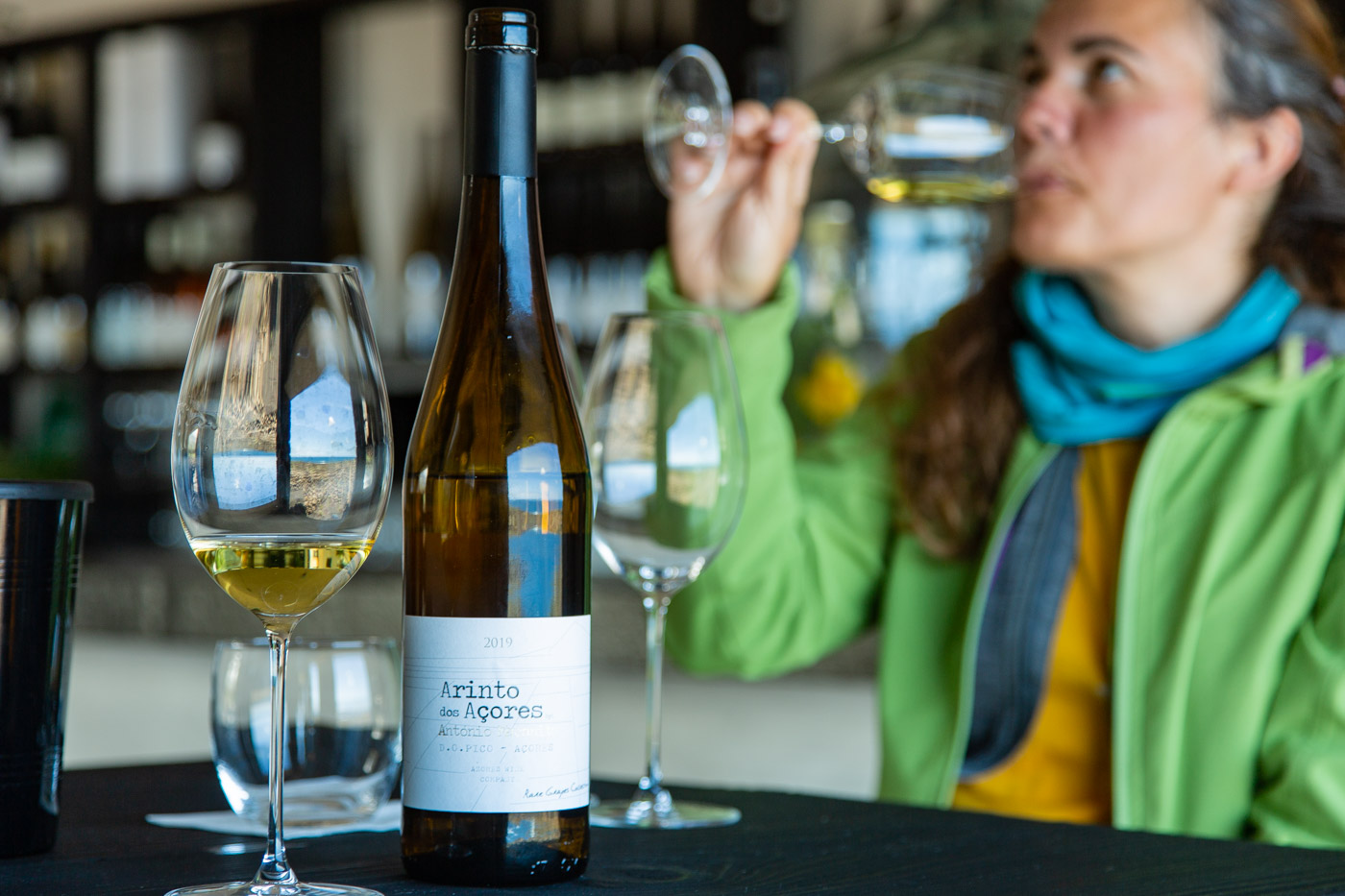
In this island, with such a strong connection to wine, the adega is much more than a winery. The adega is not only the place where wine is produced, but it is also a place where wine is drunk amongst friends. The adegas in Pico always had a small room, where those who needed (lived too far away or perhaps had drunk one glass too much??) could spend the night. It is a very good concept, and we were happy to see young entrepreneurs bringing this idea back to life.
14. Soak up the unique landscape of Criação Velha and its world heritage UNESCO vineyards
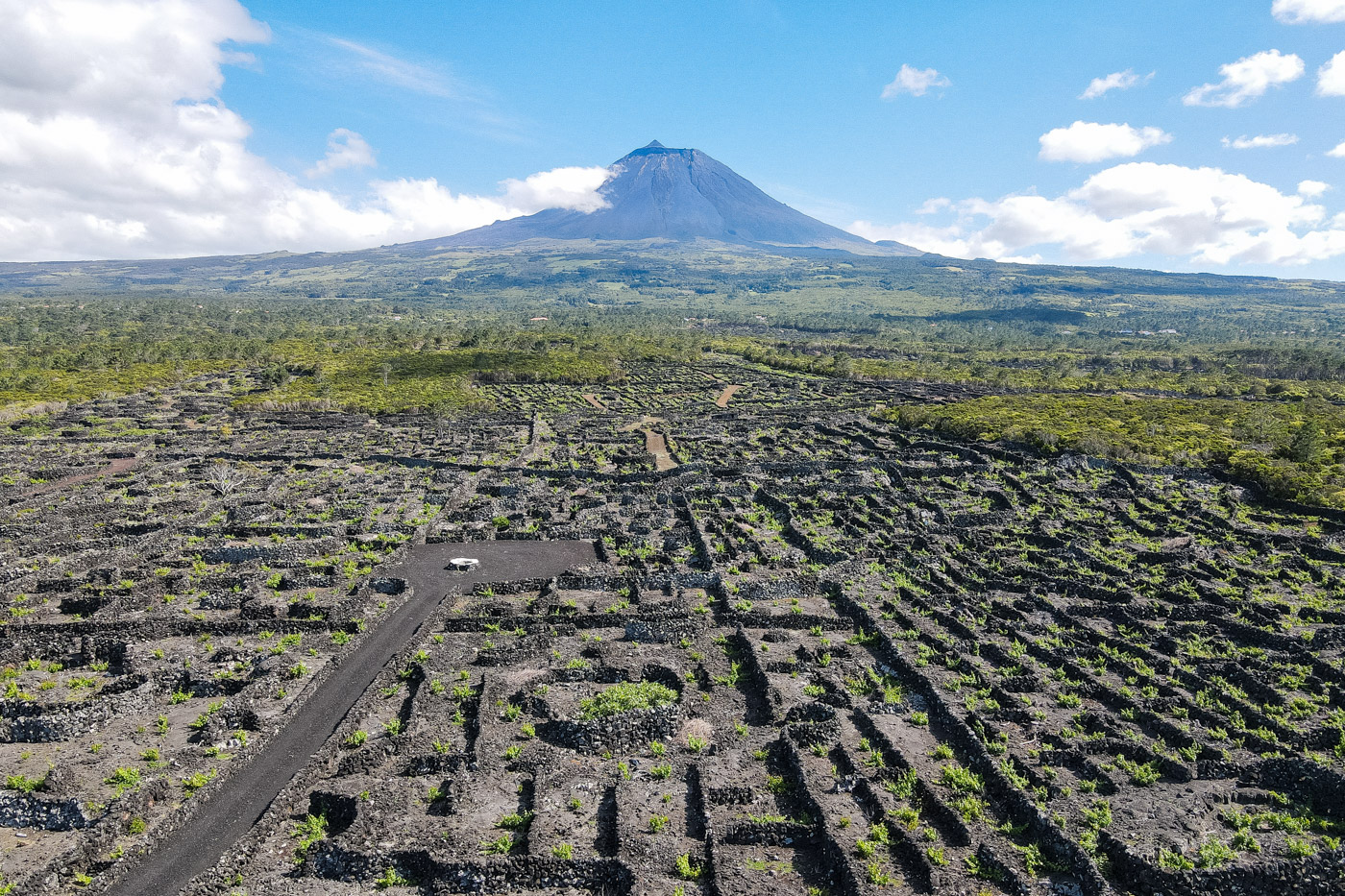
In 2004, the landscape of the Pico Island Vineyard was classified by UNESCO as World Heritage. The wine is cultivated over lava beds, with enough ground for the vines to grow their roots. This special landscape is made of short walls made of volcanic stone (creating squares known as the currais). Their goal is to protect the vine from the sea breeze and additionally, they end up warming the soil and the grapes.
15. Hike the wine trail of Criação Velha (PR05 PIC)
This is a beautiful hike that allows to contemplate not only the natural beauty of the vineyards, but the connection between man and nature. It starts at Porto do Calhau and continues first along the coast, until it goes up the hill to enter the typical architecture of the walled vineyards. Along the way, there will be many traditional elements associated to the vine culture, such as the rola-pipas (slopes naturally carved by the wine barrels when rolling to the boats) and the relheiras (tracks created by the wheels of ox carts) or even the tide-wells.
Characteristics:
- Type of circuit: Linear route
- Duration: 2 hours
- Distance: 7 kilometres
- Difficulty: Easy
16. Check the Moinho do Frade at Criação Velha
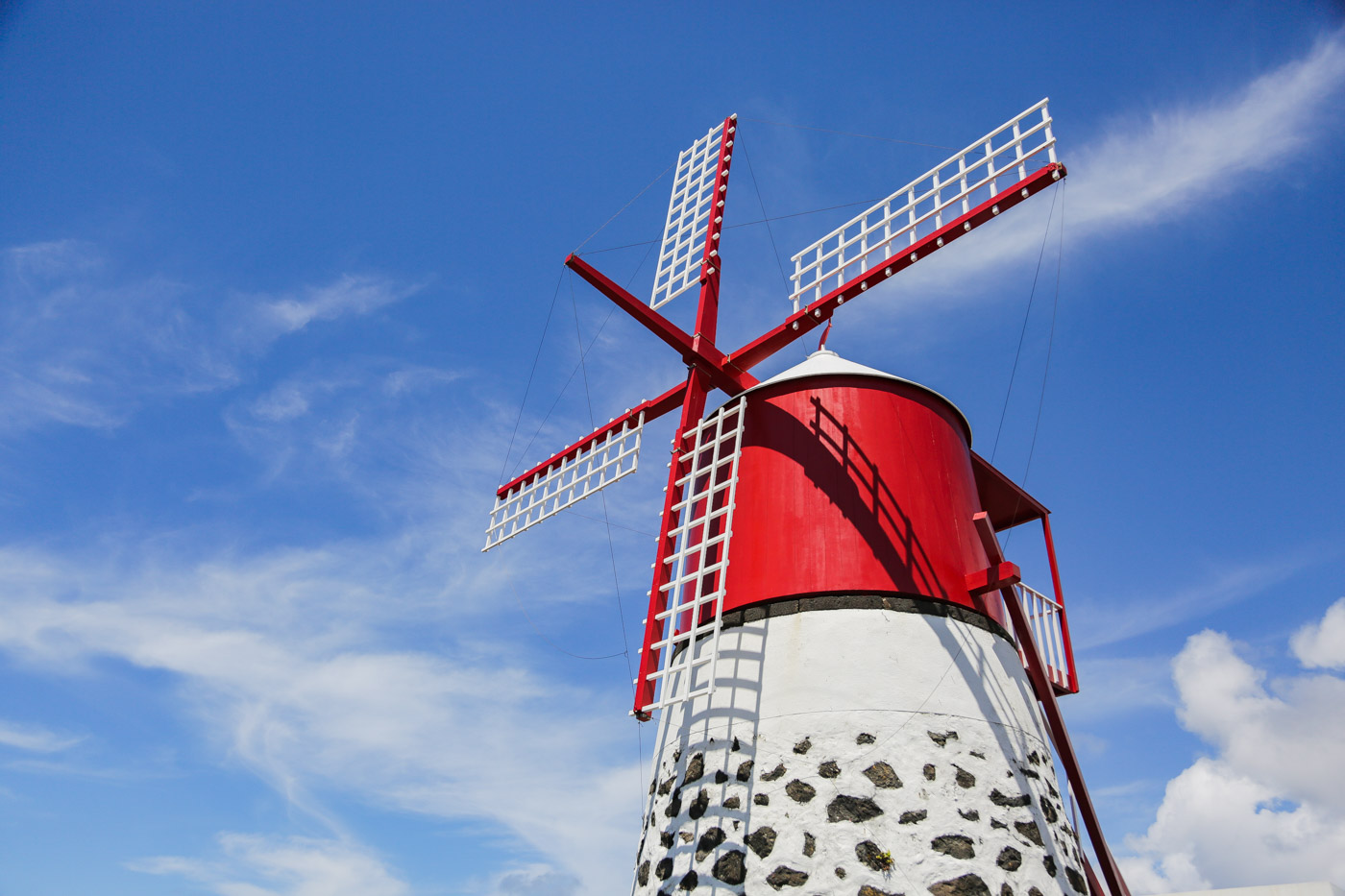
The mill that stands in the middle of the famous vineyards of Pico is called Moinho de Frade and it is an accurate copy of the original that existed there, built in the XX century. It is a rotating wind mill, which still retains the original grinding mechanism inside. The mill can be visited in summer.
Useful info:
- Free entry
17. Go underground at the Torres cave
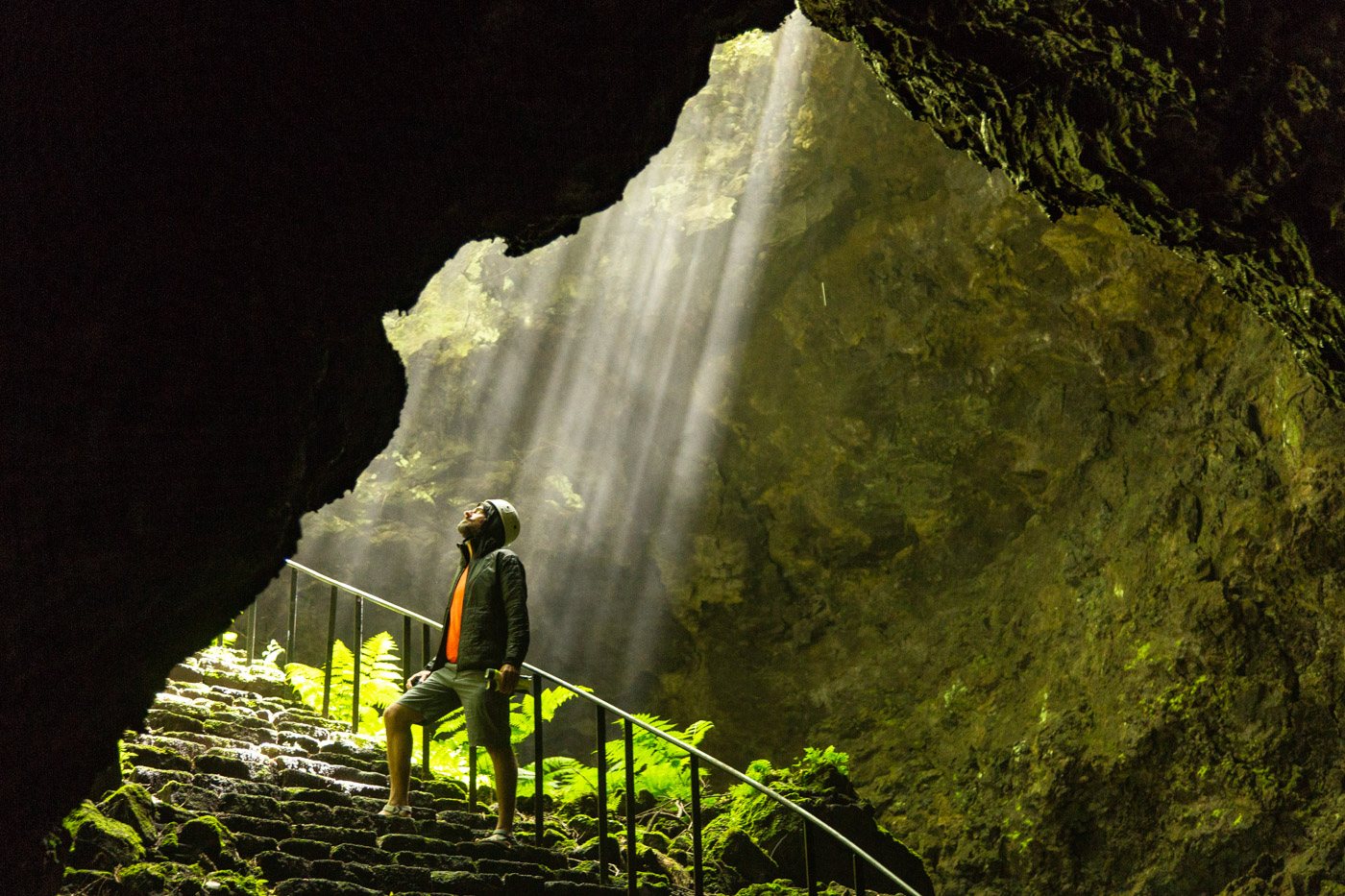
The Torres cave is a lava cave. Actually, it is Portugal’s longest lava tunnel, with an estimated length of 5,2 kilometres. We were excited to know that the cave is open to visitors and that a guide comes with us throughout the 450 metres that are accessible to visitors, and explains all the geological formations that are there to be seen.
Useful info:
- Entrance fee: 8,00 €
- Opening hours: Visits are only possible with a guide, and there are different visits scheduled during the day. It is better to call and reserve a place
18. Stay at Aldeia da Fonte
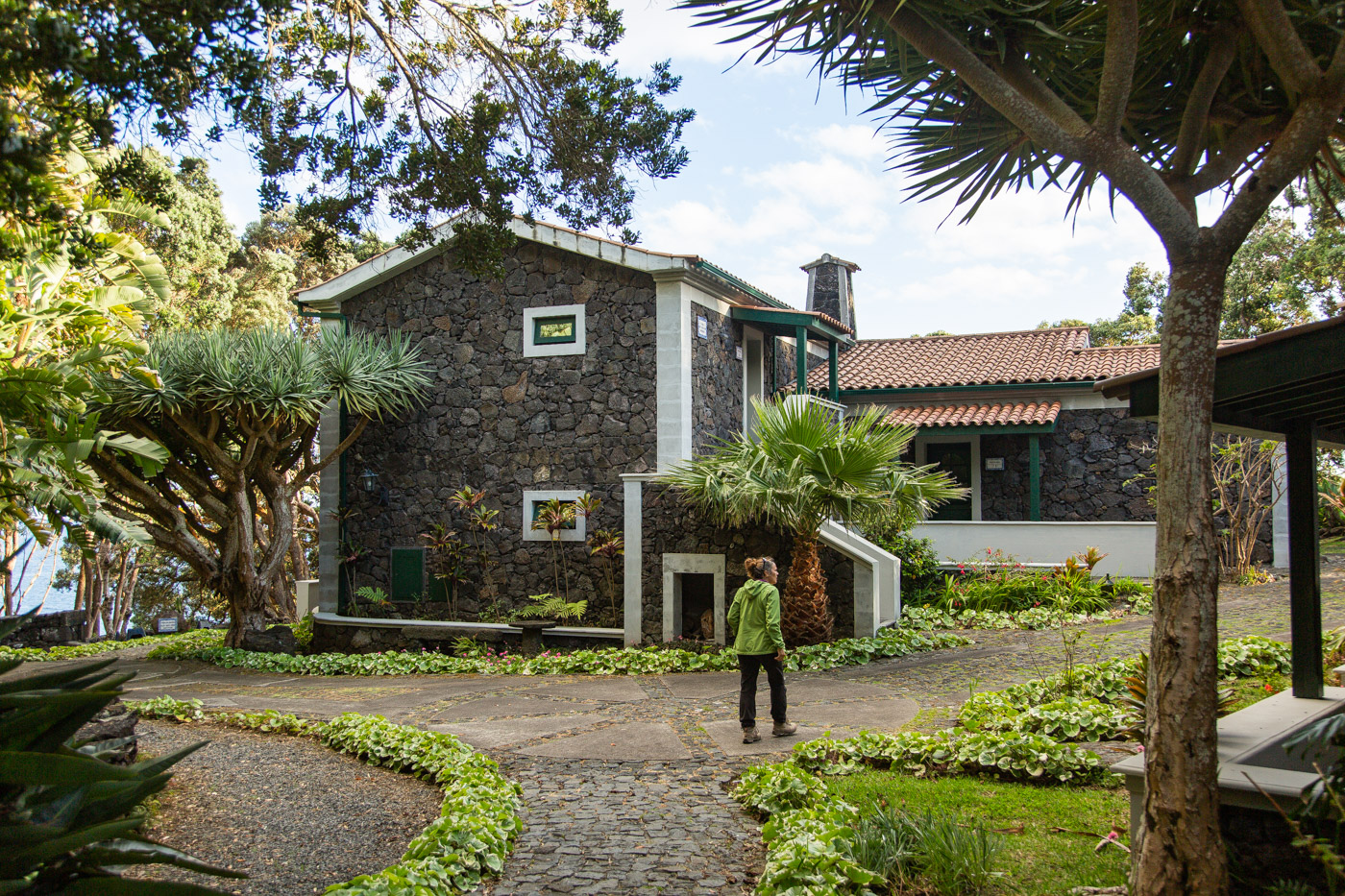
The Aldeia da Fonte resembles a small hamlet, with six volcanic stone houses. It is actually a hotel with 40 rooms, although, it looks such a tiny place, we wouldn’t expect that the place holds about one hundred beds. Located on the cliffs over the Ocean, the small hamlet also has a swimming pool and a sea lounge where guests can enjoy sunset while having a drink. Look up for the whale’s lookout. We stayed at the Aldeia da Fonte and can only recommend it for its charm and serenity…
Useful info:
- Book a room at Aldeia da Fonte
19. Find the many lava flows throughout the island
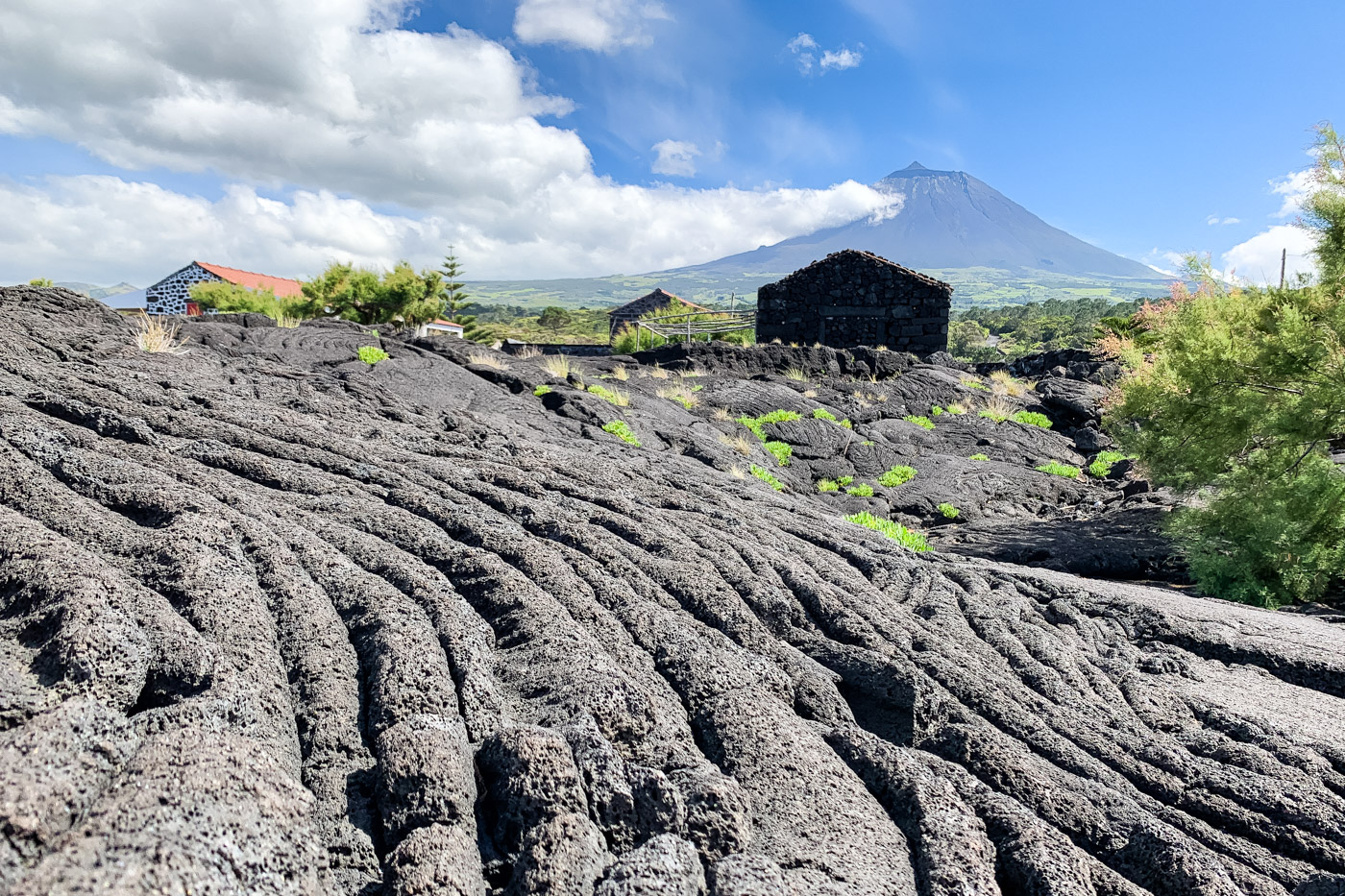
It doesn’t matter on which side of the island you are, you will always see plenty of good examples of lava flows. Lava is still very present in Pico island, as if to remind everyone that Pico, the volcano, is only dormant, but it is still an active volcano that can erupt any minute…
20. Wander through the quiet streets of Lajes
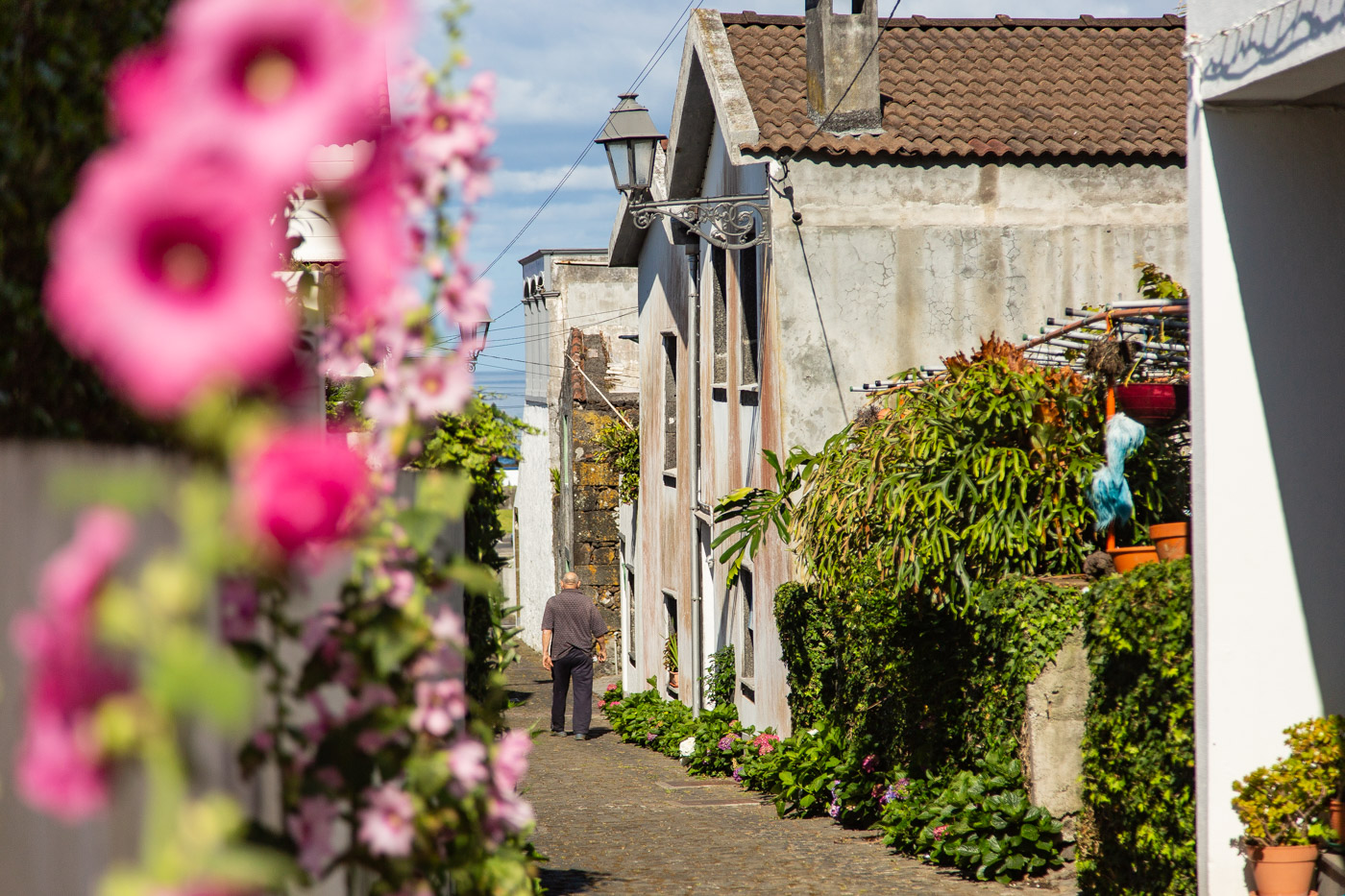
Oh the beautiful streets of Lajes! They are so tidy and neat, with so many flowers. It was while admiring on of these streets that we met Sr Domingos. He noticed us photographing the street and when we passed by him we told him he had a beautiful street to which he answered: ‘That’s because we take care about it. It is ours. When was in Lisbon I noticed people did not care about their streets, and I don’t understand why not.’ He is absolutely right. Coud it be that when we don’t care about our streets, we don’t have the feeling of belonging to a place, of being a community?
21. Visit the Whalers’ Museum in Lajes
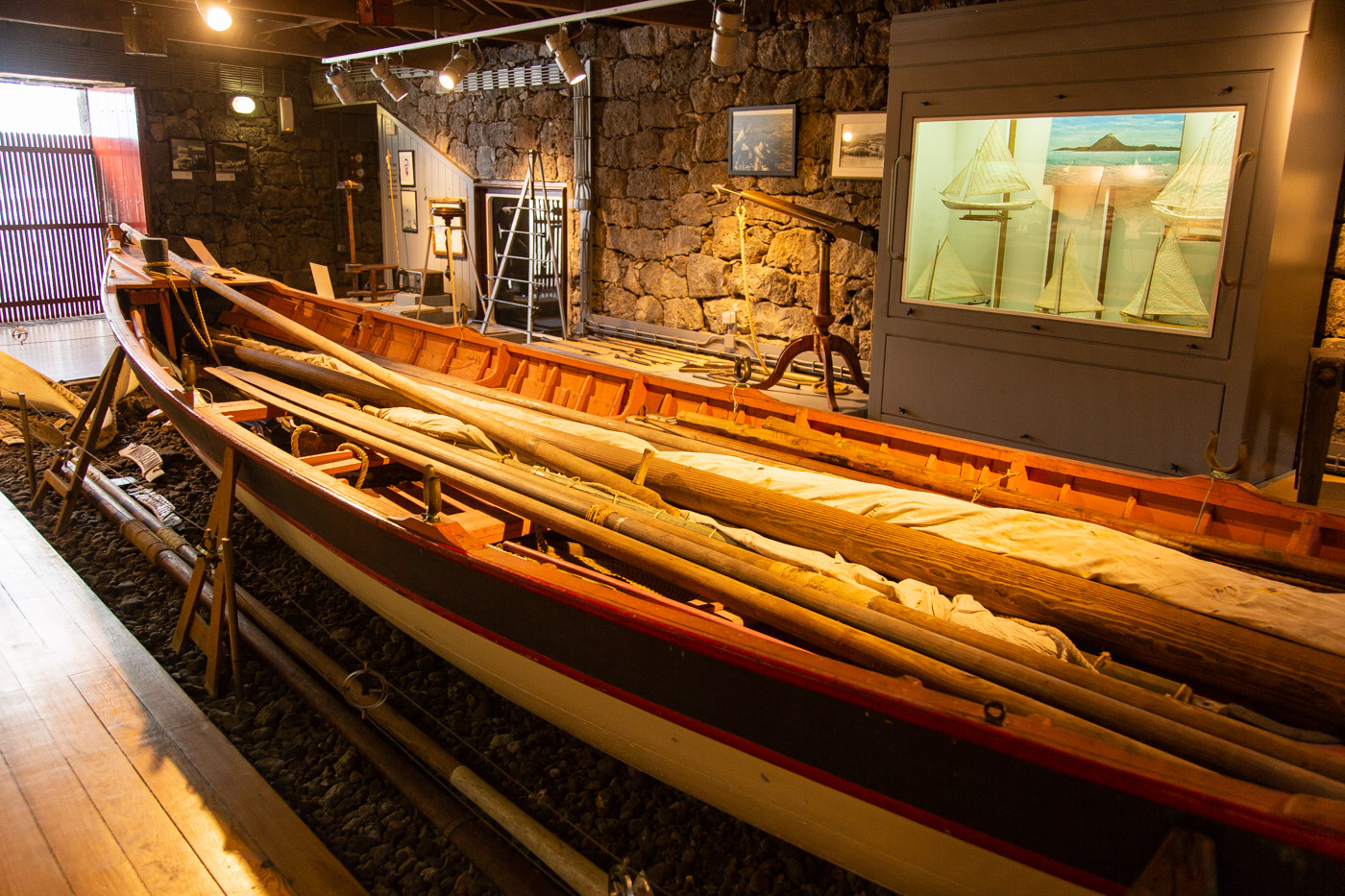
The last sperm whale was caught in the Azores in 1987. One year later, the whalers’ museum was created as a need that whalers themselves had to protect the material patrimony and human legacy of an activity that once was of subsistence importance to the population of the island.
Useful info:
- Entrance fee: 2,00 EUR
- Opening hours: From 10h00 to 17h00, closed on Mondays
- Read our article for more about Whale Hunting and Whale Watching in the Azores
22. Visit the Casa dos Botes (Boats’ houses) in Lajes
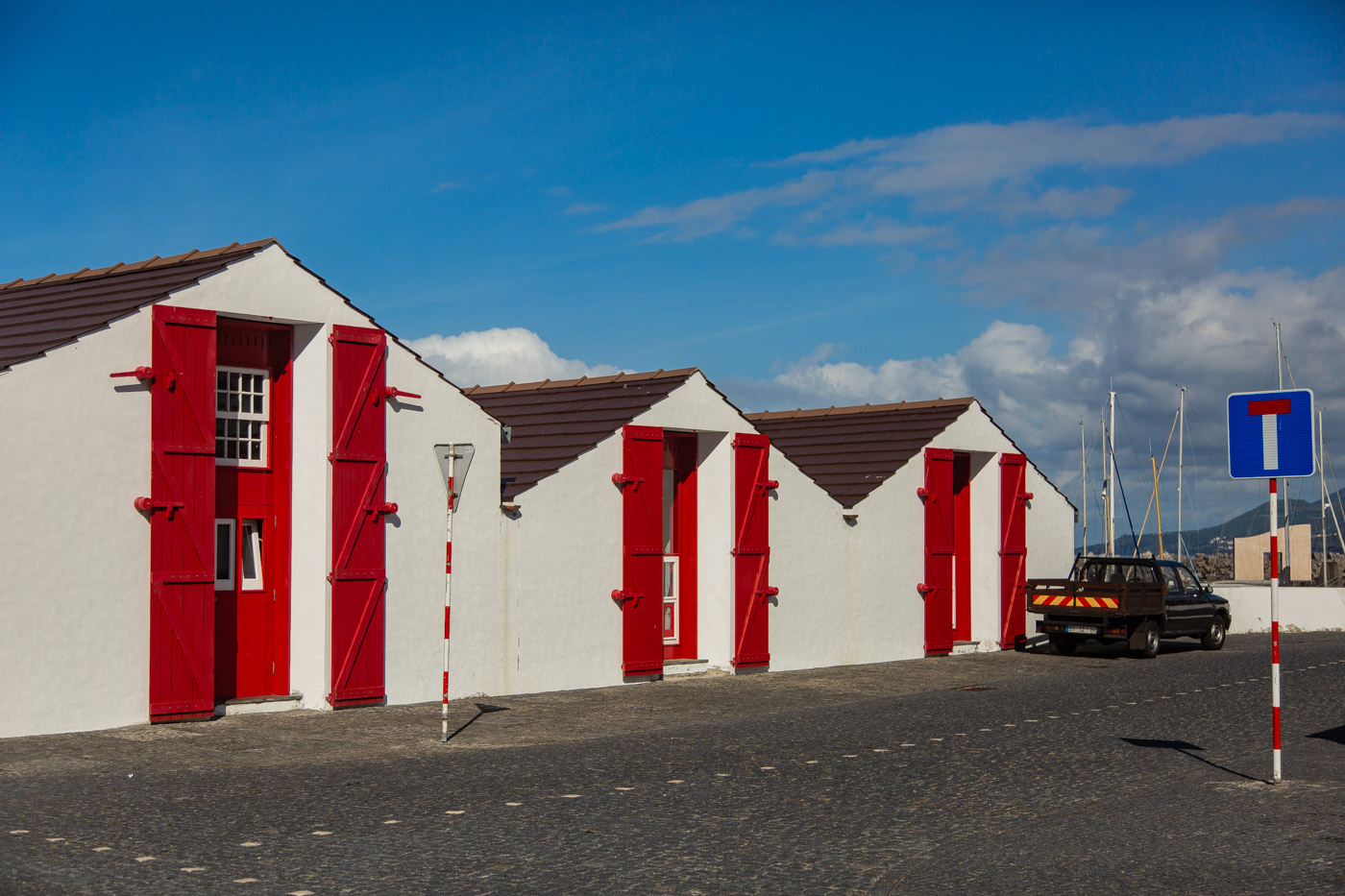
Just opposite the Whalers’ museum in Lajes, these three beautiful houses have been reconstructed. They used to be the houses where the whalers kept their boats.
23. Don’t miss a Cetacean Watching Tour
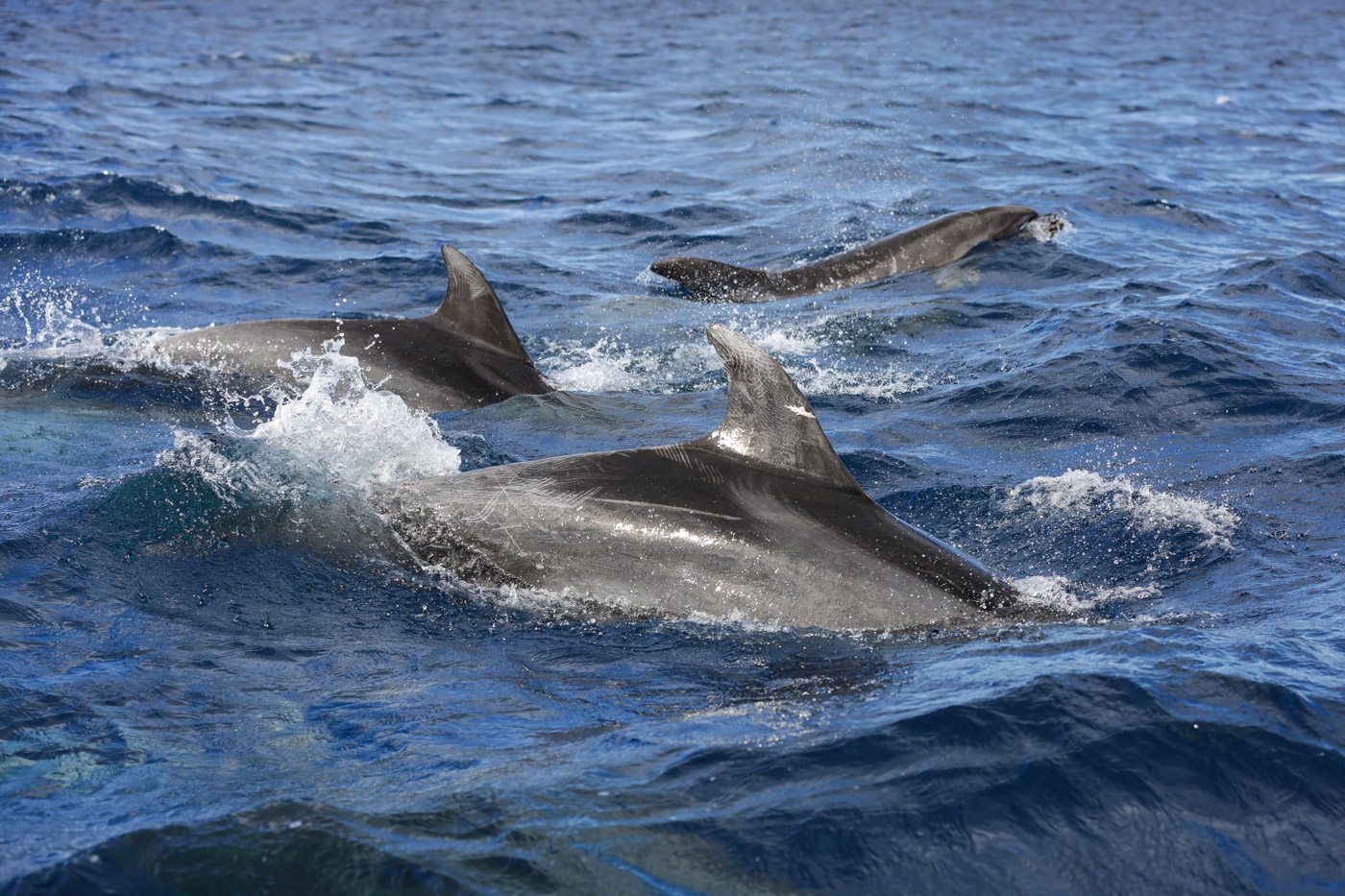
First of all, let me explain what a cetacean watching tour is in the Azores. It is a tour by boat, in which a skipper (and usually also a biologist) take a group of persons to the sea in order to spot dolphins and whales in their natural habitat. This is therefore a unique experience, especially because the archipelago is blessed with marine wildlife.
There are around 27 different species of cetacean that can be observed in the waters around the Azores. Even though there are whales in the Azores all year round (there are resident sperm-whales off the coast of the islands), many others pass off the coast on their migratory routes. Therefore, the best time to spot different and of whales (including the blue whale) is in spring, from March to June.
Useful info:
- We went on a cetacean watching trip with Aqua Azores and can only recommend them.
- Prices vary depending on tour and services offered. We paid 50,00 EUR/person
24. Try the traditional food of the Azores
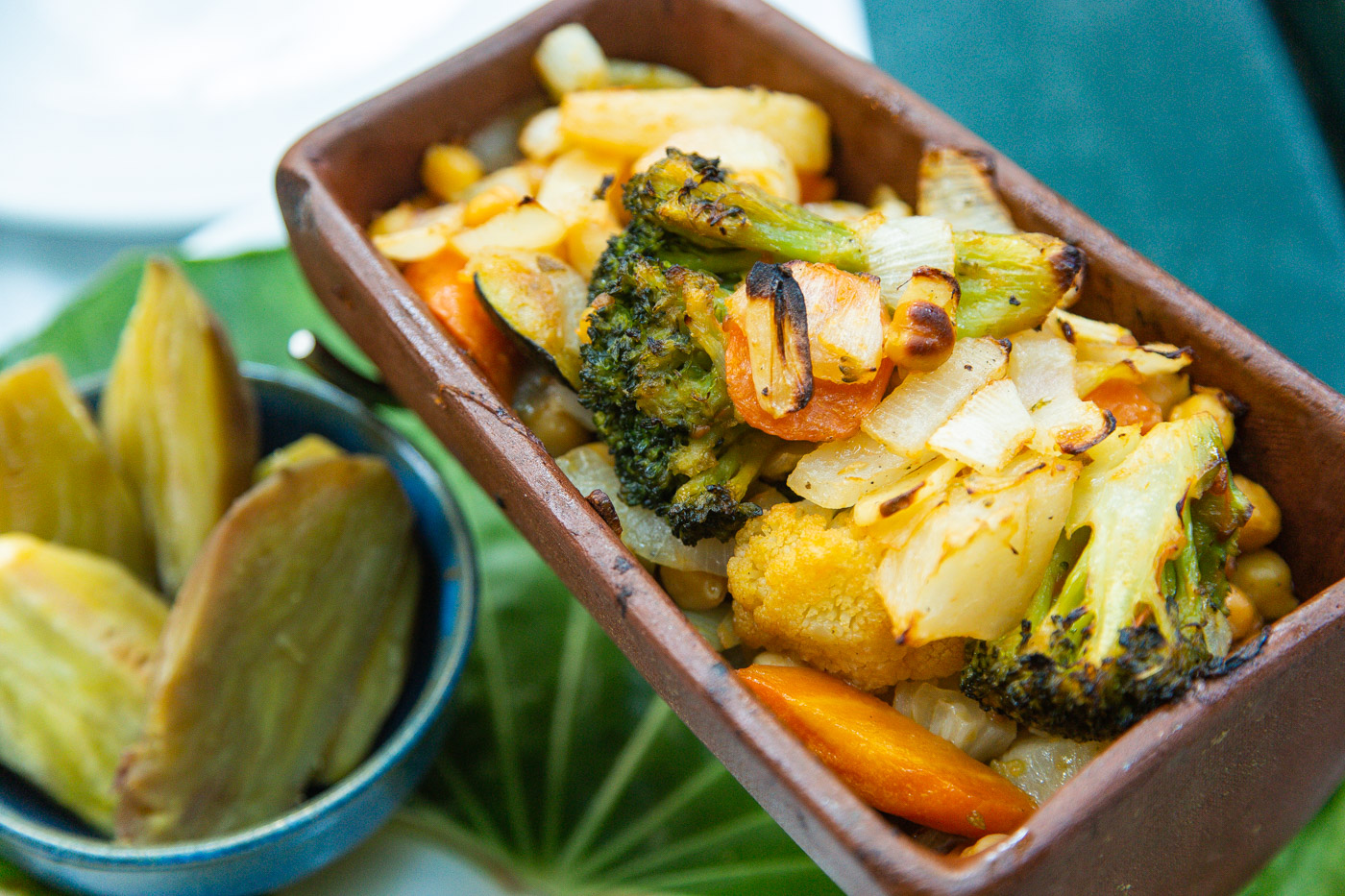
Cooking with a traditional roof tile made of clay is one of the dishes that we found in the island. Therer were several dishes cooked in the oven n this recipient, such as octopus or beef, and we did find that the food tasted better, but it could also have been the wood stove…
25. Swim in one of the natural pools of the island of Pico

After a few days in the Azores we stopped counting the natural pools. There are so many thought the archipelago, and Pico is no exception. All you have to do is find your favourite and dive for a swim. The water was mainly cool, after all this was early June and this is the Atlantic Ocean, but, it was always a very nice and refreshing experience.
26. Have a drink at the Cella bar
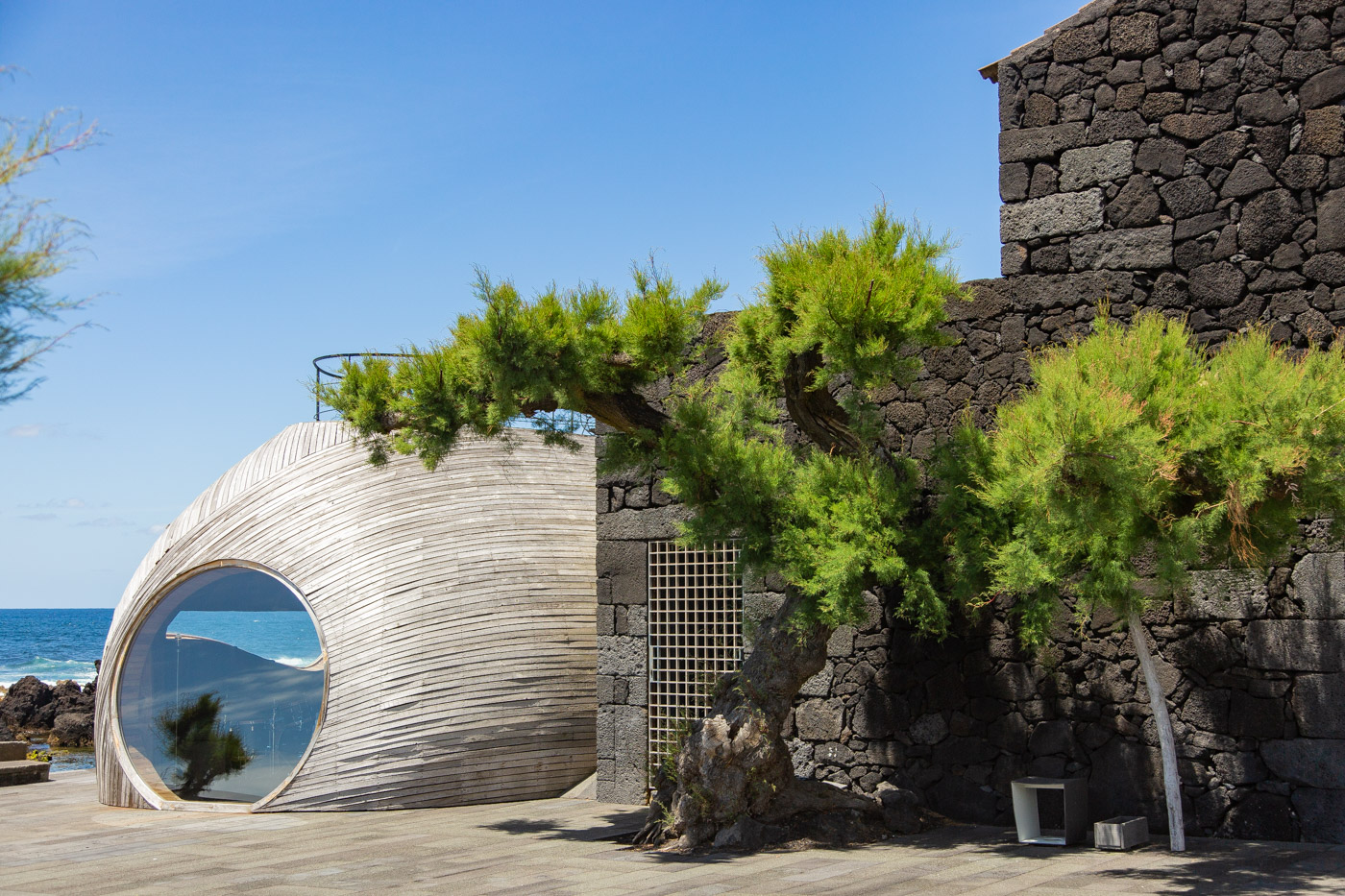
There are many places where to stop for a drink in Pico island, and an adega really is the perfect place to try the different wines produced on the island. But, if you wish to sit on a nice terrace with unbeatable views over the sea, you should have a stop at this bar, with a very unique architecture and atmosphere.
27. Look for the typical houses of Pico
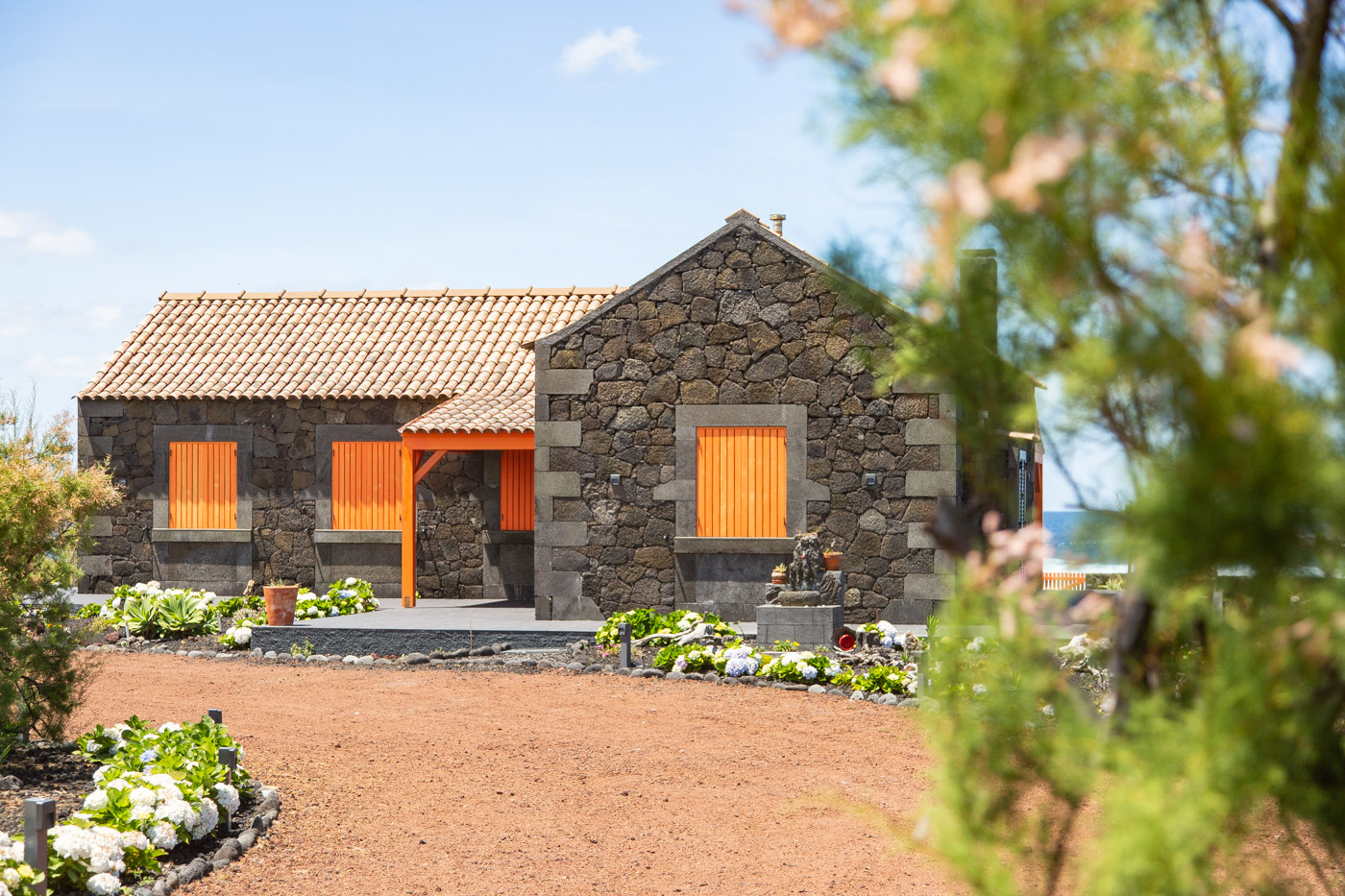
There are different kinds of architecture in the island. Most of the houses that you will find are made with volcanic stone. These volcanic houses are found everywhere throughout the island. On the northern coast of the island, you will see the influences of the continent, specially of the Algarve, with many houses being whitewashed. Near the ports, houses have many characteristics of the whale architecture, characterised by the miras (a kind of belvedere) on top of the roof, from where locals could observe the sea.
28. Visit the Achada Plateau
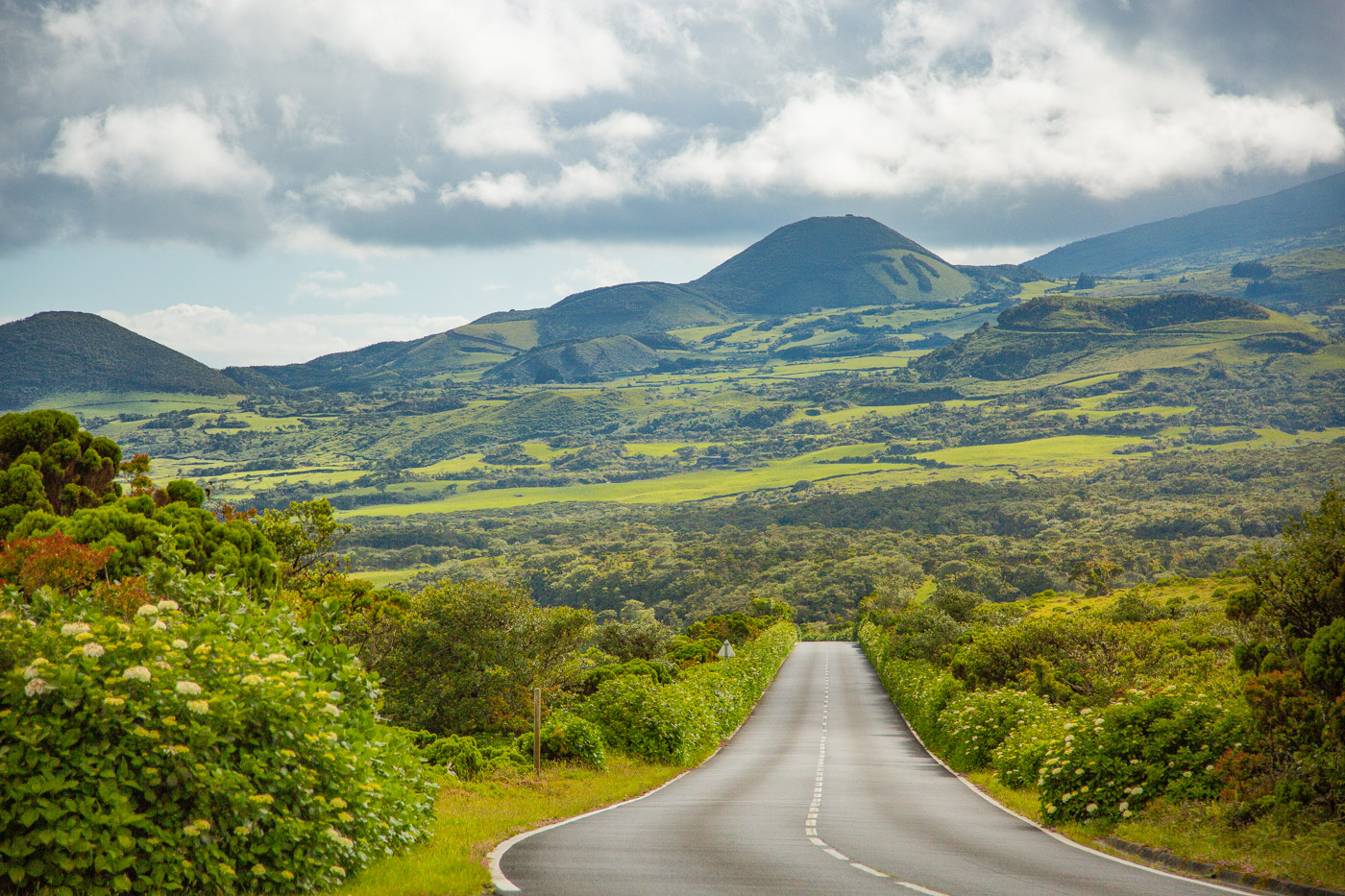
The Achada Plateau is located on the highlands of Pico Island at a average altitude of 750 metres above sea level. It is a 30 kilometres long volcanic mountain range, that stretches from Lagos do Capitão until the easternmost point of the island. It has got 190 volcanic cones, some of them with lovely craters and lakes inside.
29. Drive along the EN2 (transversal) and EN3 (longitudinal) roads with a car
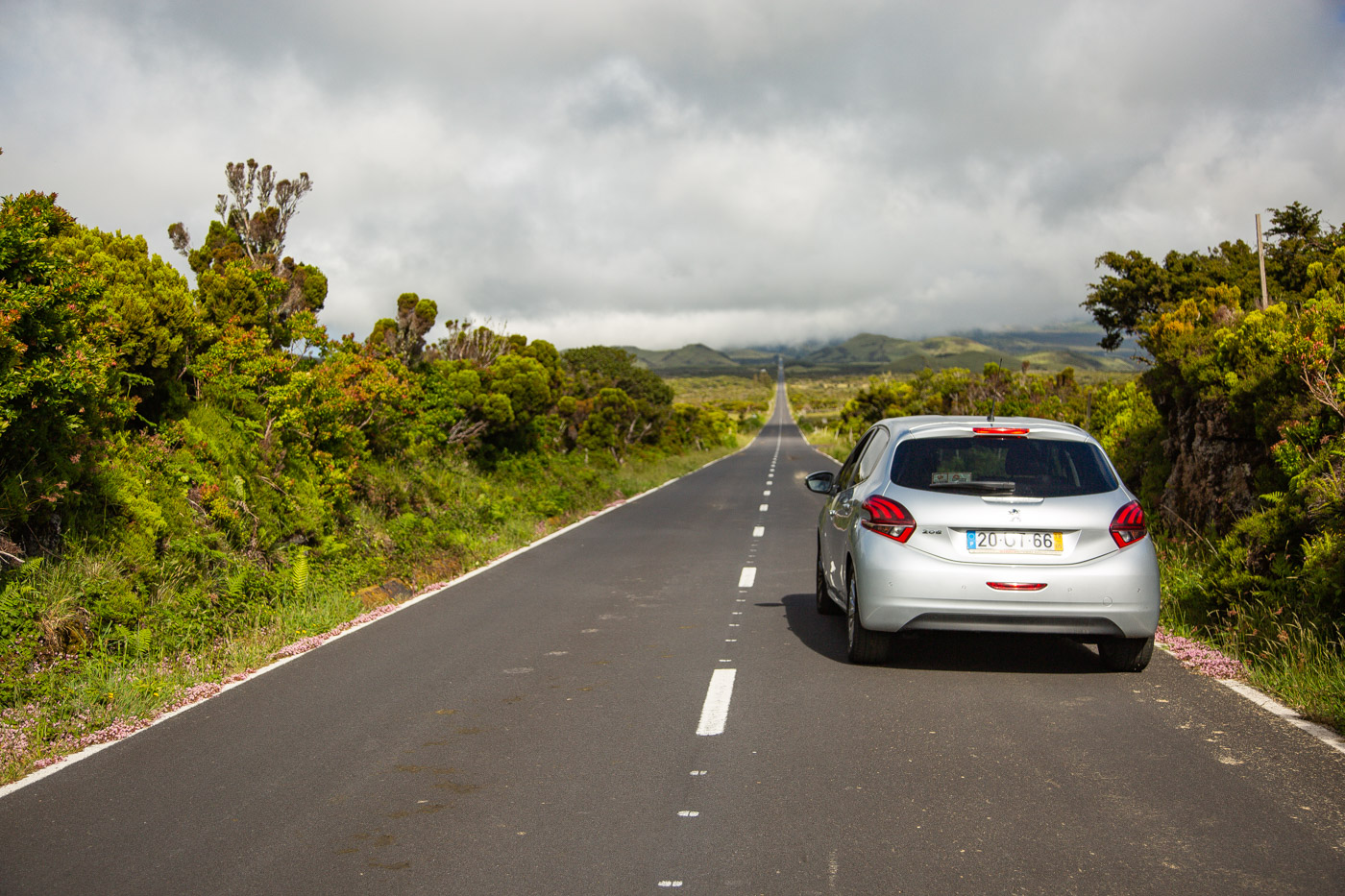
If all you do in Pico is rent a car and drive along the island, you will have done enough to fill your eyes of beautiful landscapes. Pico has got some of the most beautiful roads in Portugal. The EN3, also called the longitudinal road, built on the plateau, all the way along the island from Madalena until the EN2. The EN3 is also famous for being the longest straight road of Portugal – nine kilometres without one single bend.
The EN2 is another road with lovely views. This one crosses the island from North to South, connecting São Roque to Lajes do Pico.
Useful info:
- We rented a car with Autatlantis and can only recommend their service.
30. Look for the Lagoa do Capitão (Capitain’s Lagoon)
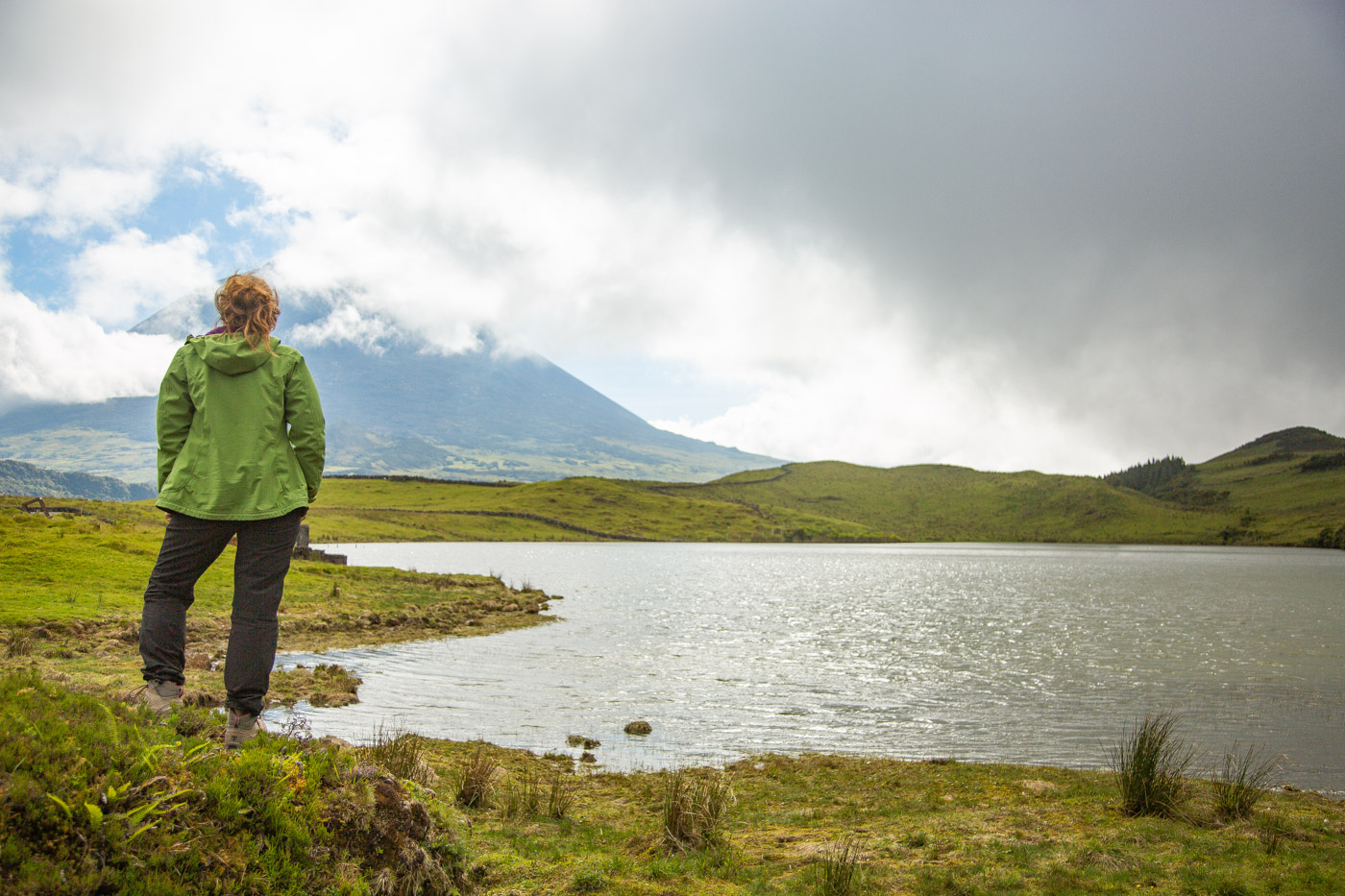
It is up there, in the high plateau that you will find a series of lagoons. The most photogenic s arguably the Captain’s Lagoon. If you are lucky, if there is no wind and Pico Mountain is not covered by clouds, you may try to get Pico’s reflexion on the lagoon. Unfortunately, there is a particular climate on the plateau, with a lot of rain and clouds…
31. Hike the Lagoons’ Trail (PR19 PIC)
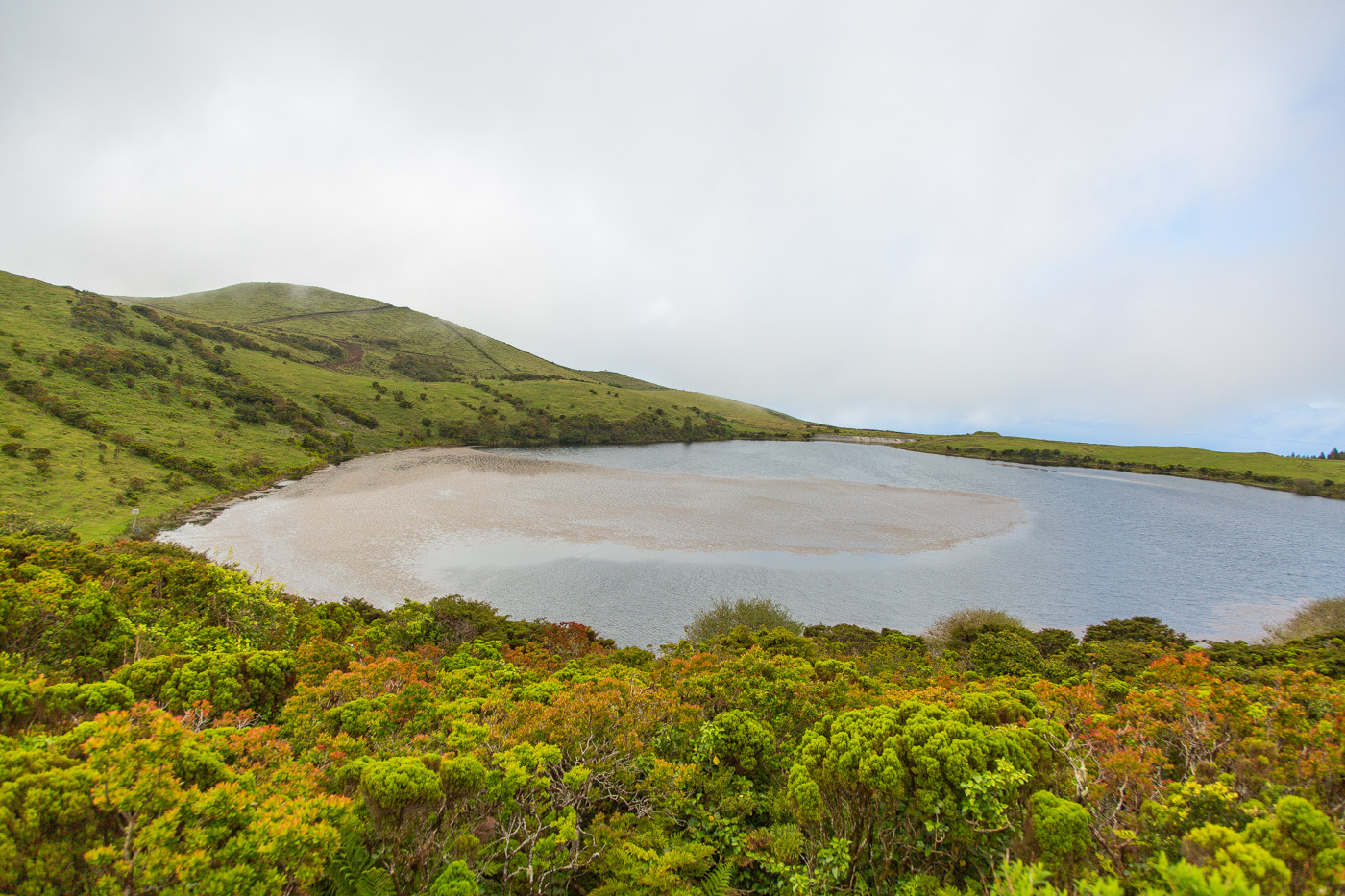
Characteristics:
- Type of circuit: Linear route
- Duration: 7 hours
- Distance: 22 kilometres
- Difficulty: Easy
- Starting Point: EN2
- Finishing Point: Ribeirinha
32. Find your favourite restaurant
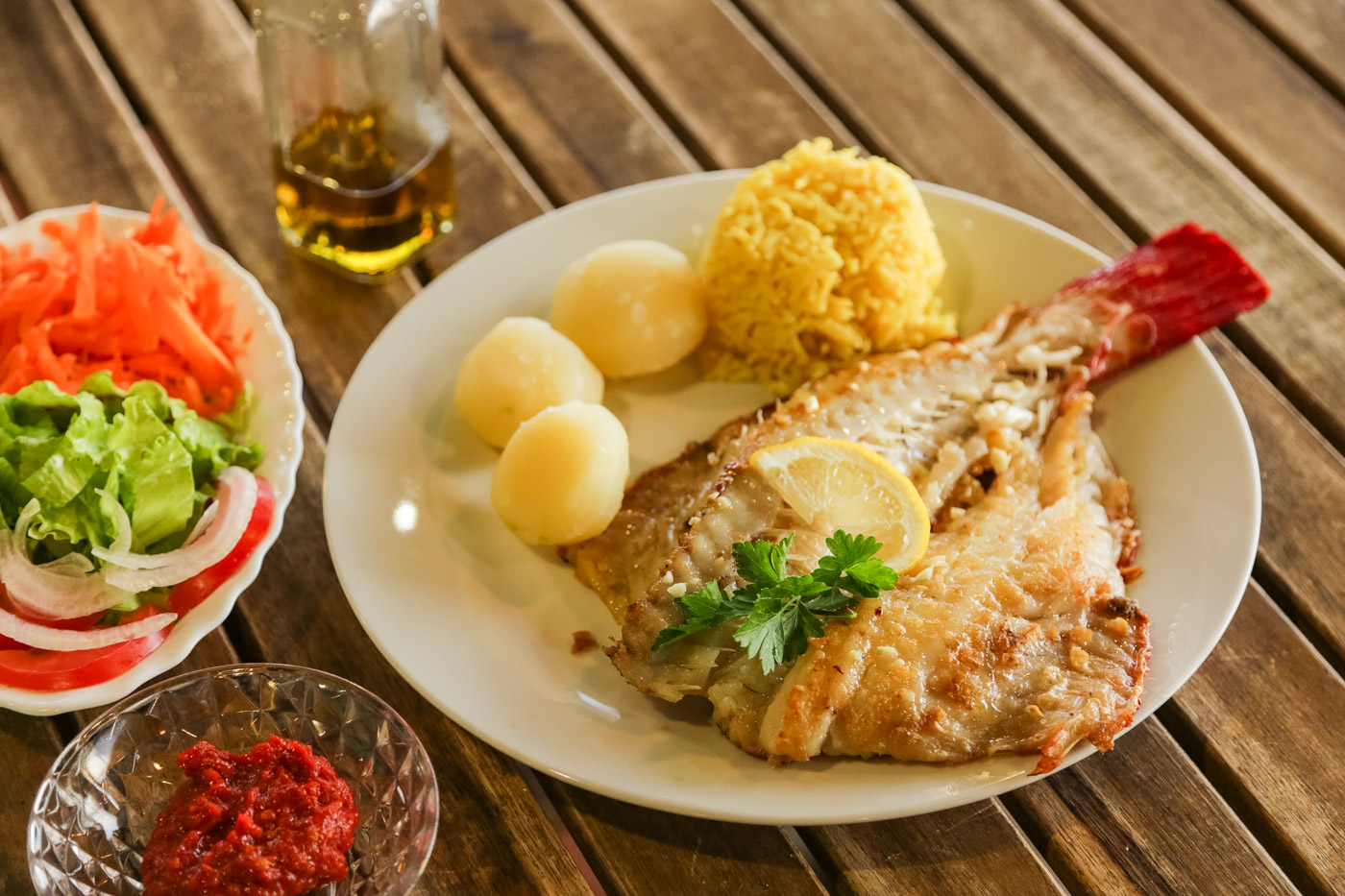
Food is just delicious in the Azores! It doesn’t really matter how fancy the restaurant is. As long as you see locals eating inside, it is guaranteed that the food is good. Fish is always fresh and beef is always local and organic! What else can you wish for?
33. Go to Pontinha
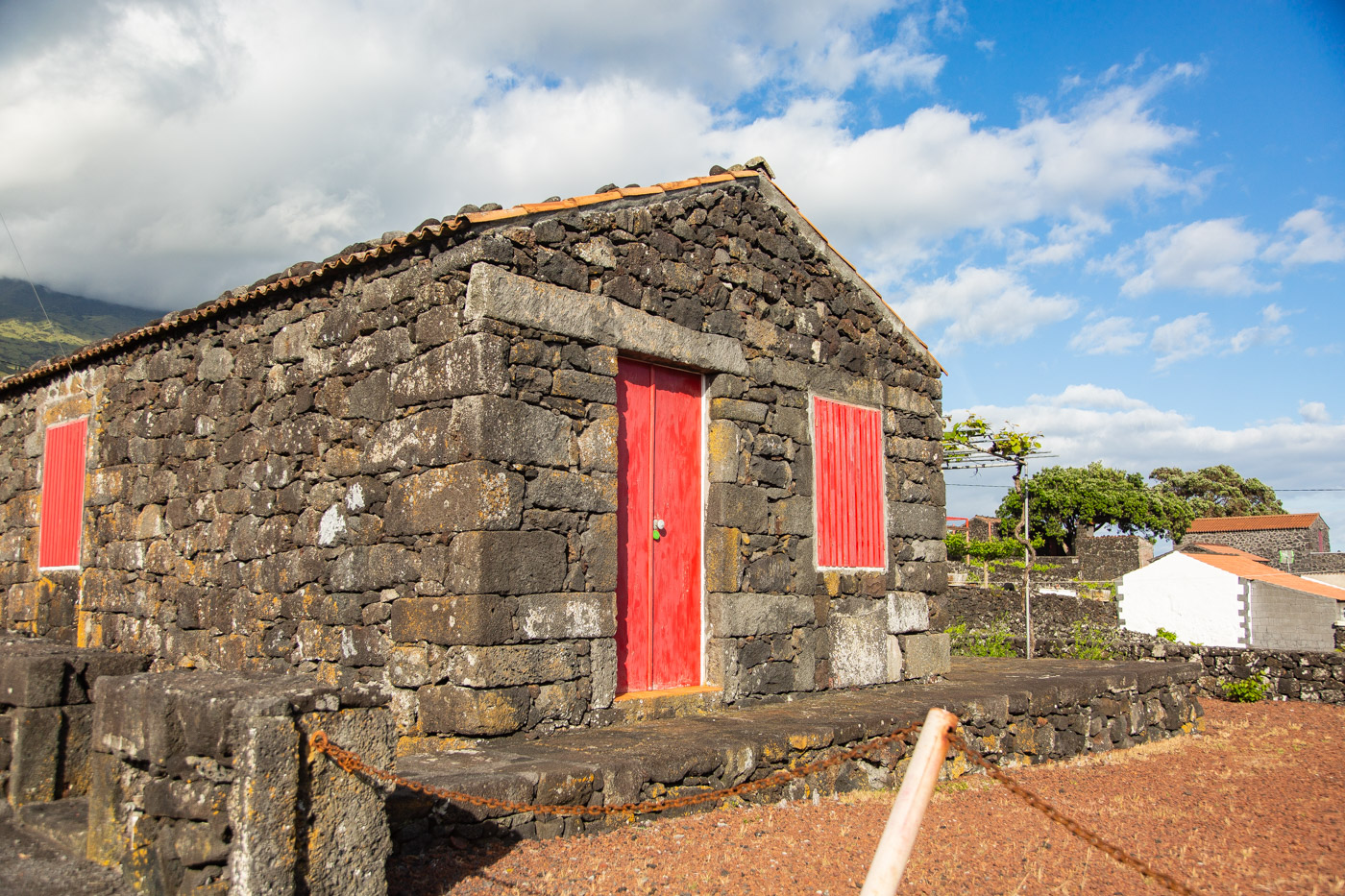
Pontinha is another protected area. It s a small viniculture centre with only tiny wineries. It s worth to stop and stroll in the main street to understand the importance that wine and the vineyards once played in the lives of the population.
34. Have a look at the Arcos do Cachorro
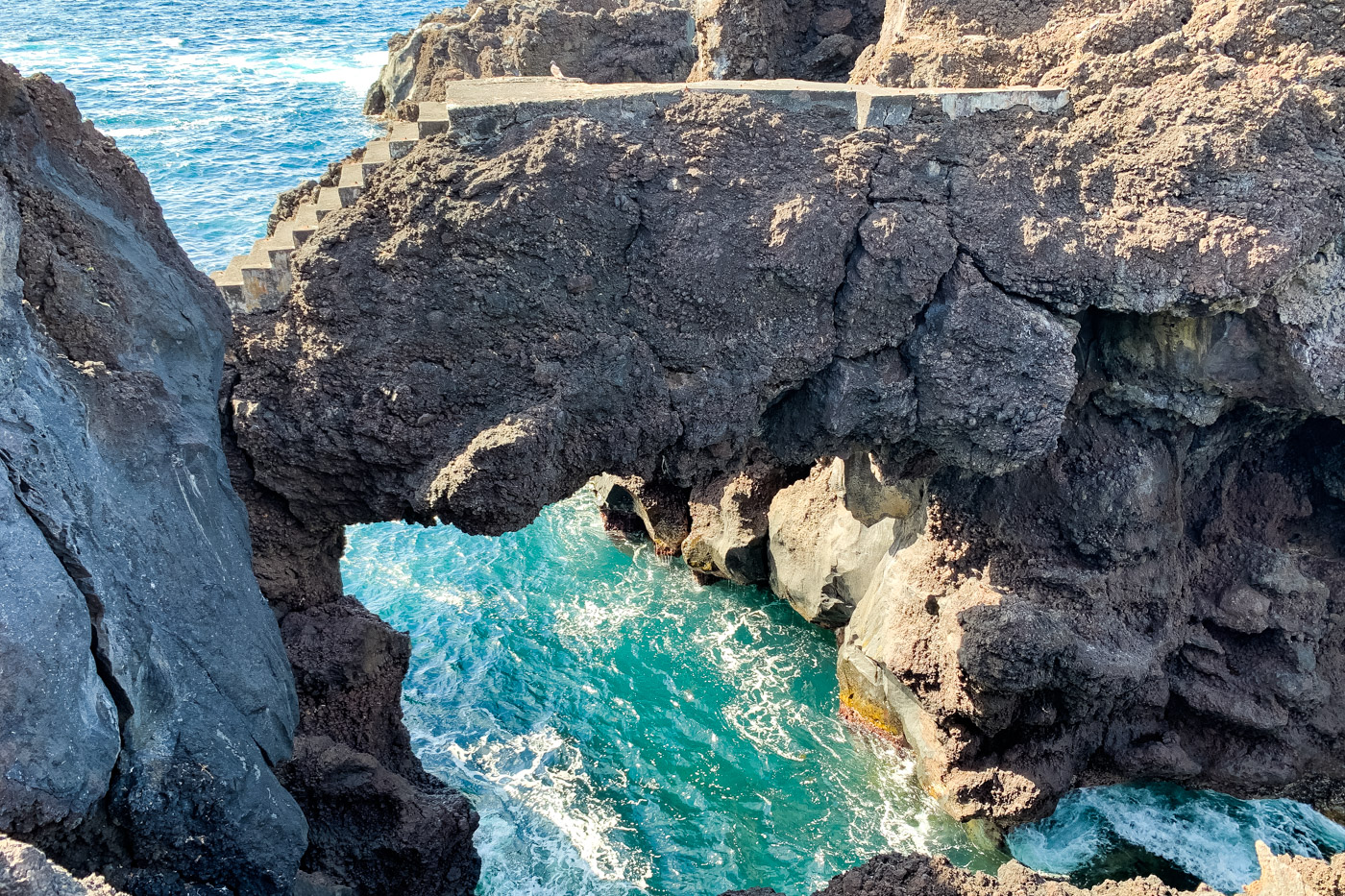
This is a natural arch carved in the rock by the erosion of the sea and wind. The rock formations in this area are impressive, and so is the strength of the Atlantic…
35. Swim in the natural pool of Arcos
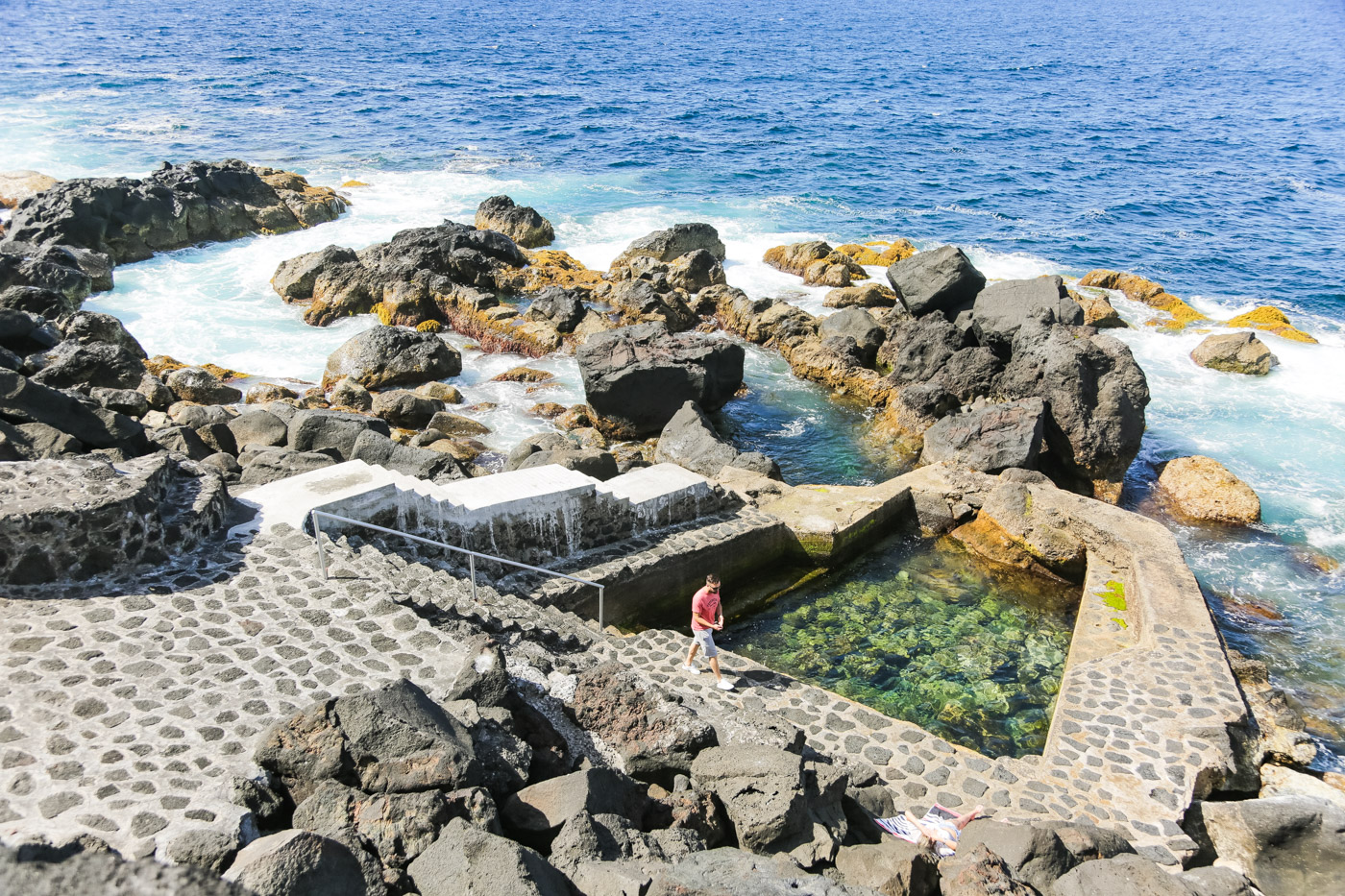
One of our favourites in Pico Island. This natural pool was almost hidden, and could hardly be seen from the main road. But we we’re glad that some locals told us about it. We grabbed a beer at the bar upstairs and went down for a refreshment in the pool. Very nice!
36. Find the tiny hamlet of Lajido
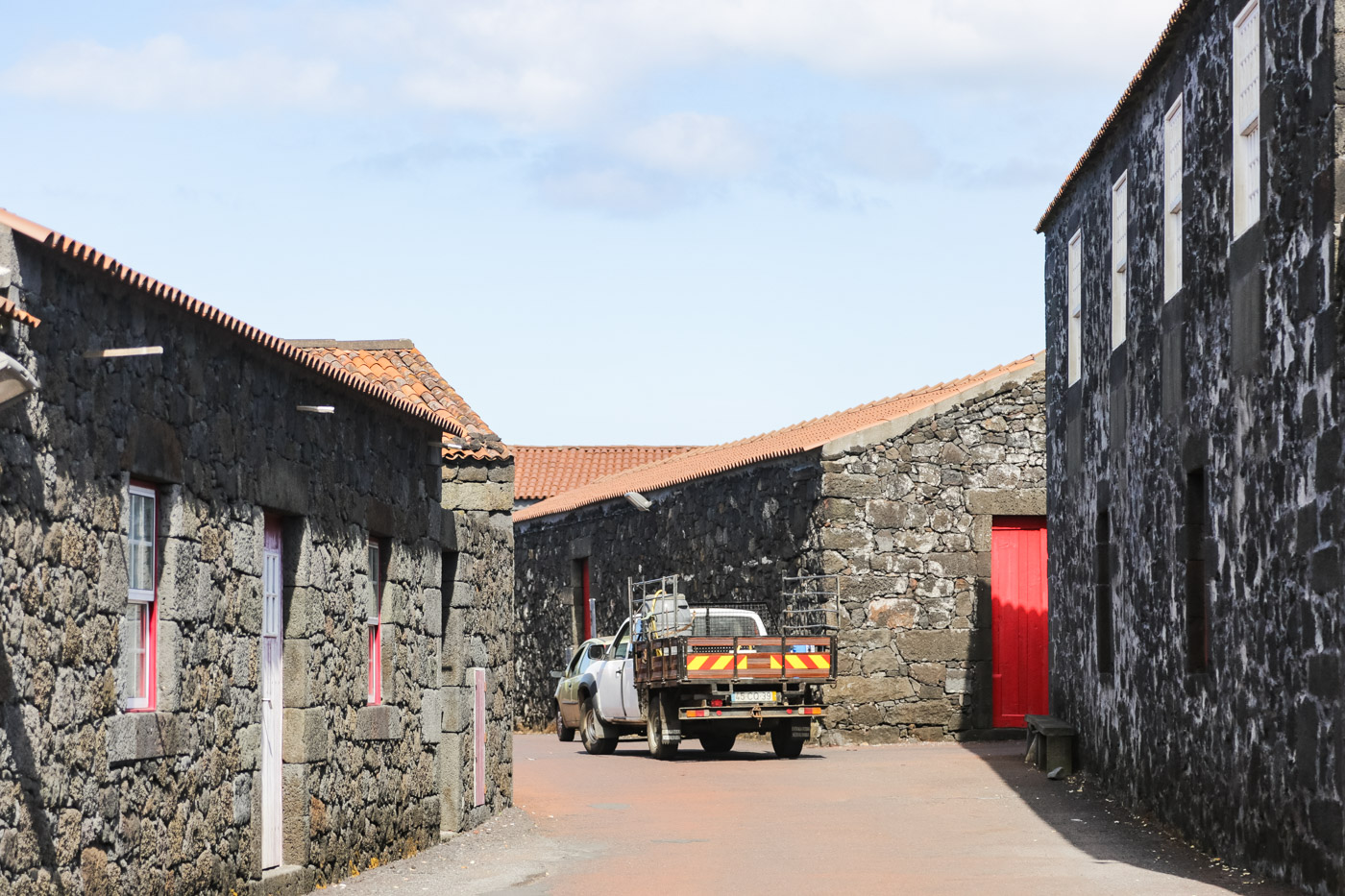
Even though there were no people on the streets at the time we voted Lajido, we had a feeling this was a lovely hamlet, because houses were very much cared for, with many tiny terraces with flowers and more decoration.
Tips to help you plan your visit to Pico Island Azores
- COVID 19 Travel Restrictions
The Azores have remained in the green zone of the safest destinations for holidays in 2021. The government of the Azores is taking the Covid pandemic very seriously, and all travellers who arrive without a negative test, will be tested upon arrival as well as on the 6th and 12th days of their stay. Costs are supported by the government and the procedure is quick and smooth. Covid 19 should not hold up your visit to the Azores.
- Free Flight Routing Service to a Second Island
SATA Air Açores provides a free routing service to passengers travelling within the Azores, and to or from Mainland Portugal or Funchal. In practice this means that if you want to visit, let’s say, Flores, you only need to have a ticket to Terceira or São Miguel (the archipelago’s gateways), and do not need to buy another ticket to continue to Flores. You get a free routing to Flores (certain conditions apply, though).
- 35 EUR Safe Destination Voucher to Spend in the Azores
As a reward for arriving with a negative test and making a safety registration online, the government of the Azores is offering the Azores Safe Destination Voucher to all visitors, in the amount of 35 €. You receive the voucher via email once your registration is confirmed. The voucher is valid for 20 days counting from its issuing date and you can use it on many services and products (including car rental agencies, restaurants and travel agencies). Get your Azores voucher here.
- Transport during your Visit to Pico Island
Unfortunately, public transport will not allow you to visit the entire island, because there are few bus routes, and the ones that exist make few journeys per day. Only the main villages are connected and often the schedule is reduced to one or two trips in the morning and another one or two in the afternoon.
For travellers interested in seeing different villages, stopping at lookouts, having a break for a swim, the easiest solution is to rent a car or bike. There are several car rentals in Pico (but not many), so it is better to have this organised before arrival, to make sure you get a car. In the high season, the island can get busier.
OUR PICK: We rented our car with Autatlantis and recommend the experience.
- Useful Websites – Spotazores
Weather changes very quickly in the Azores. Locals usually say that sometimes the weather is so capricious that the four seasons show up in only one day. Also, sometimes it is raining on one side of the island, and the other side has a bright sunshine. In order to help you search for the best weather, there is a website and app (Spotazores) that features live webcams located in different places of the island. It makes it easier to decide which way to go if you are seeking for good weather or running away from fog. Here is the link to spot Azores.


